FOCUS ON: Condition-based Lubrication
ALSO: Forklift Safety
Sustainable Maintenance
Importance of computerizing your maintenance operations.

MROMAGAZINE.COM / SPRING 2023 VOLUME 39 / ISSUE 1
DIGITAL MAINTENANCE
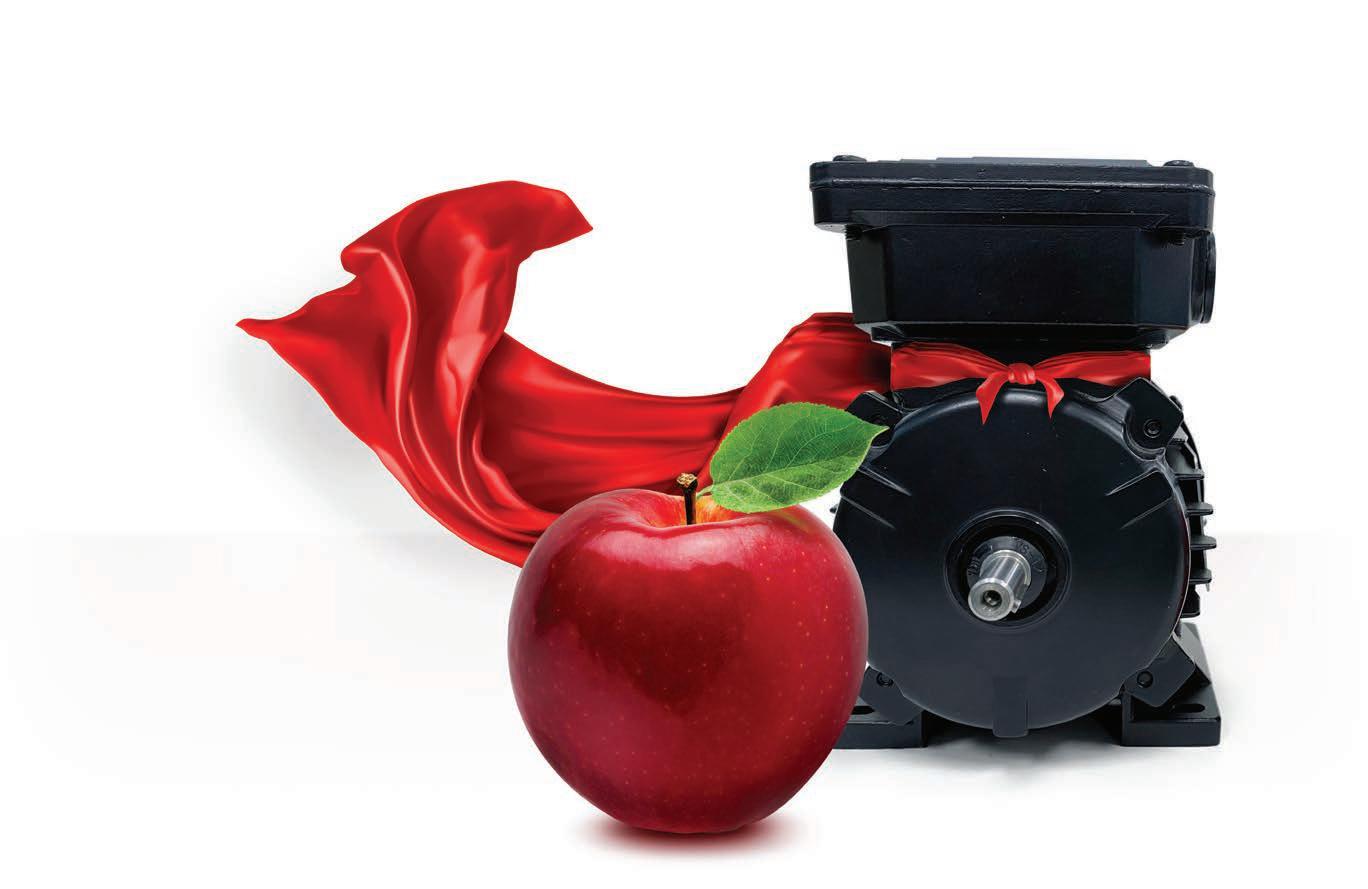



tk here 2 MRO / Spring 2023 MROMAGAZINE.COM
Photo: Credit
8 10 12 14 20
HOW WILL TECH ADVANCES IMPACT CONDITIONING MONITORING IN 2023?

Maintenance departments have historically used condition monitoring to make maintenance decisions based on machine health and failure signals.
LAYING THE GROUNDWORK FOR SAFE FORKLIFT OPERATION
Operating a forklift safely requires that several factors be considered before a worker gets anywhere near the driver’s seat.
MAXIMIZING EFFICIENCY: BUILDING A BUSINESS CASE FOR A DOWNTIME TRACKING SYSTEM

When it comes to manufacturing operations, unscheduled downtime and delays can lead to significant production chain losses.
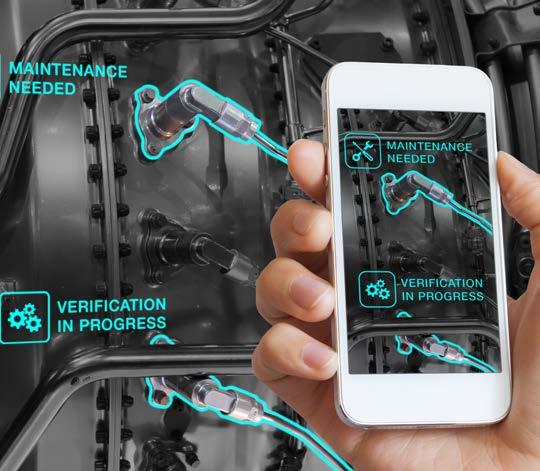

MAXIMIZING ASSET PERFORMANCE WITH A CMMS

Asset management is a crucial aspect of any business that relies on physical assets, such as equipment, machinery, or facilities, to operate.
PLANNING AND SCHEDULING SOLVES STAFFING
Staffing is a huge problem for all of us.
Cover Image:
3 MRO / Spring 2023 MROMAGAZINE.COM Columns 4 EDITORIAL Software to the rescue? 16 MAINTENANCE 101 Sustainable maintenance practice. 18 WHAT’S UP DOUG Condition-based lubrication. 22 MRO QUIZ Understanding lubricant additives and their function. In every issue 6 NEWSWATCH 24 NEW PRODUCTS 26 IN CONVERSATION WITH MRO 12 20 16 14 INSIDE
Blue Planet Studio/ Adobe Stock
FEATURES
2023
SPRING
Software to the rescue?
In the lead-up to our software-based virtual event, we asked our readers: “What software do you use to manage your maintenance?” in an online poll. It was great to see that (as of publication time) the results showed only 14 per cent of respondents don’t use any software. While on the other end of the spectrum seven per cent said they used all of the options listed.
By far the most used (not surprisingly, as we are in the maintenance sphere) was CMMS (computerized maintenance management software) with 44 per cent usage, followed by ERP (enterprise resource planning) at 26 per cent, EAM (enterprise asset management) at five per cent, while another five per cent they used another type of software.
Many software options exist for those in the maintenance world who want to go digital. This was apparent when MRO began planning our recently completed Reducing Downtime: How Software Can Help virtual event last year.
We researched far and wide, and came up with a cross section of software solution experts to help our readers implement and improve their operations. In all, four presentations and a panel discussion outlined best practices to reduce downtime through use of software.
Here is a summary of the event.
Miguel Ramos, Limble CMMS, presented Reducing downtime by creating the right maintenance strategy for your company. He spoke about identifying your largest contributors to downtime, and how to create a strategy to make the biggest impact to reducing downtime with limited resources.
John Bernet, Fluke Reliability, spoke about IIoT and vibration-based condition monitoring – is it a false dawn. During his presentation, he explored the promise of IIoT to increase asset coverage, some of the challenges with developing and deploying these solutions, how AI/ML is enabling human
on the loop, but not out of it, and the resultant need for reliability engineers to work with a trusted partner who brings a balanced approach, blending human expertise and IIoT technologies.
Jaidev Krishnan from AssetWatch, spoke about Preventing downtime through early detection of bearing faults, using wireless remote condition monitoring. The session used a case study to learn how to leverage predictive analytics to identify early bearing failure by analyzing the data collected from equipment sensors.
Mo Abuali, IoTco, looked at how to Leverage A.I. and predictive analytics toward zero-downtime, zero-defects manufacturing. His presentation educated attendees on the “digital tools of the trade” to realize Industry 4.0 in a systematic approach, with focus on the business case ROI, real time connectivity, and predictive AI-enabled technologies for Maintenance 4.0 and Quality 4.0.
The virtual event concluded with a panel discussion that looked at how maintenance software helps your bottom line. This discussion was free flowing, and covered a lot of ground.
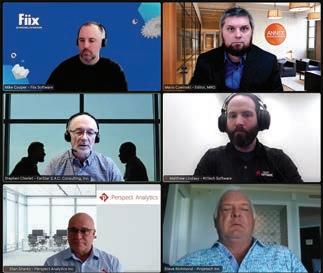
All of the sessions are now available on MRO’s virtual event page and YouTube channel. Be sure to check them out for some very insightful software use tips.
MARIO CYWINSKI Editor mcywinskiw@mro.ca
ESTABLISHED 1985
SPRING 2023
Volume 39, Number 1
READER SERVICE
Print and digital subscription inquiries or changes, please contact Customer Service Angelita Potal, Customer Service Administrator Tel: 416-510-5113 email: apotal@annexbusinessmedia.com
Mail: 111 Gordon Baker Rd., Suite 400 Toronto, ON M2H 3R1
EDITOR Mario Cywinski 226-931-4194 mcywinski@annexbusinessmedia.com
SENIOR PUBLISHER Paul Burton 416-510-6756 pburton@annexbusinessmedia.com
NATIONAL ACCOUNT MANAGER Ilana Fawcett 416-829-1221 ifawcett@annexbusinessmedia.com
BRAND SALES MANAGER Chander Verma 437-218-0941 cverma@annexbusinessmedia.com
AUDIENCE DEVELOPMENT MANAGER Beata Olechnowicz bolechnowicz@annexbusinessmedia.com 416-510-5182
MEDIA DESIGNER Graham Jeffrey ACCOUNT CO-ORDINATOR Trish Ramsay 416.510.6760 tramsay@annexbusinessmedia.com
PRESIDENT/COO Scott Jamieson sjamieson@annexbusinessmedia.com

Machinery and Equipment MRO is published by Annex Business Media, 111 Gordon Baker Rd., Suite 400, Toronto ON M2H 3R1; Tel. 416-442-5600, Fax 416-510-5140. Toll-free: 1-800-268-7742 in Canada, 1-800-387-0273 in the USA.

Printed in Canada
ISSN 0831-8603 (print); ISSN 1923-3698 (digital)
PUBLICATION MAIL AGREEMENT #40065710
Subscription rates.
Canada: 1 year $65, 2 years $110. United States: 1 year $110. Elsewhere: 1 year $126. Single copies $10 (Canada), $16.50 (U.S.), $21.50 (other). Add applicable taxes to all rates.
On occasion, our subscription list is made available to organizations whose products or services may be of interest to our readers. If you would prefer not to receive such information, please contact our circulation department in any of the four ways listed above.
Annex Privacy Officer Privacy@annexbusinessmedia.com 1-800-668-2374
No part of the editorial content of this publication may be reprinted without the publisher’s written permission © 2023 Annex Business Media. All rights reserved. Opinions expressed in this magazine are not necessarily those of the editor or the publisher. No liability is assumed for errors or omissions.
4 MRO / Spring 2023
MAINTENANCE NOTEBOOK
Connect with MRO magazine @mro_maintenance @MROMagazine /company/mro-magazine @mromagazine info@mromagazine.com mromagazine.com @mrocanada
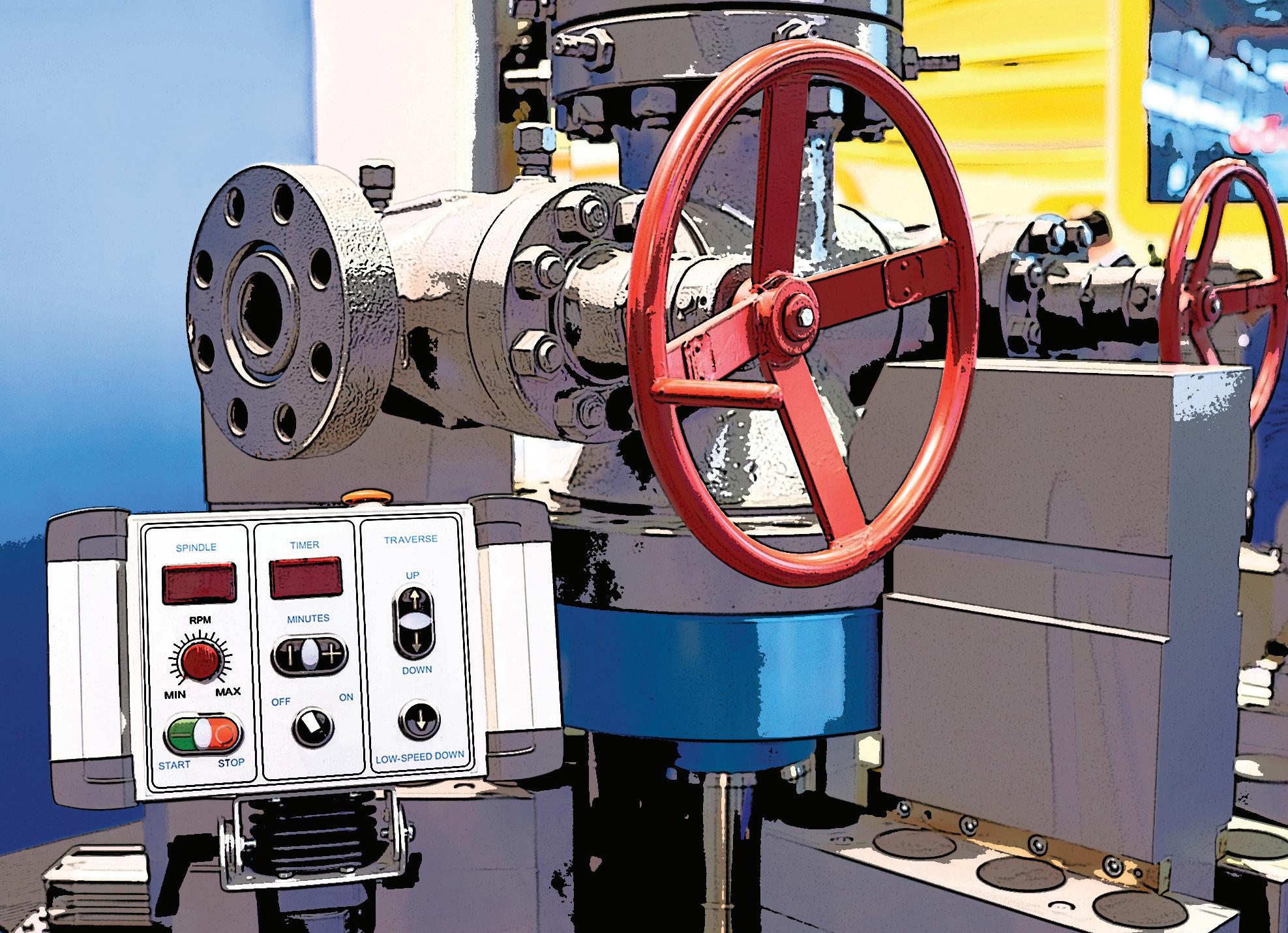

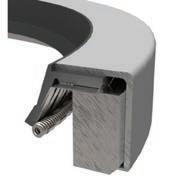
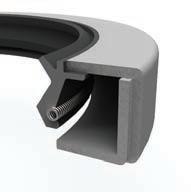

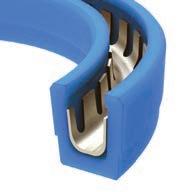
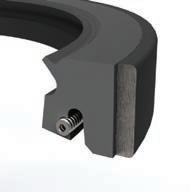
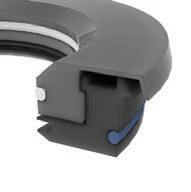
NEWSWATCH
FOOD AND BEVERAGE BARTEK TO BUILD MALIC AND FUMARIC ACID FACILITY IN ONTARIO
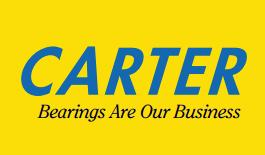
Bartek Ingredients plans to build a new production facility that promises to be the world’s largest and most technolog ically advanced malic and food-grade fumaric acid production plant.
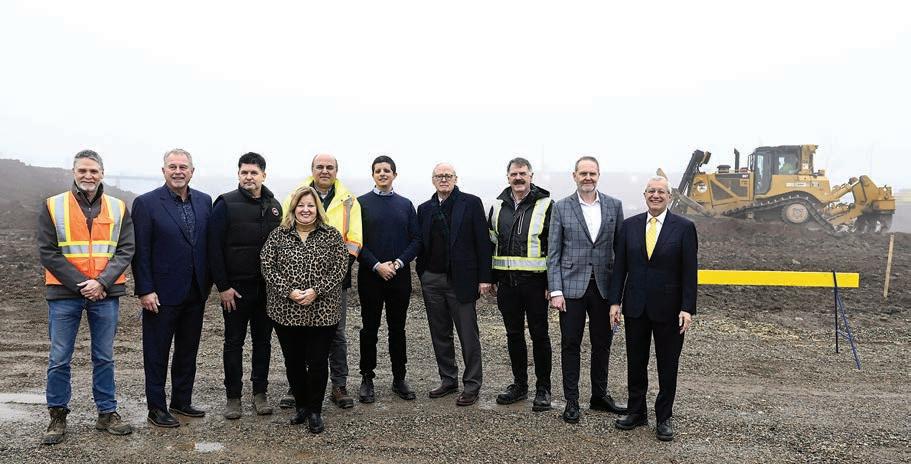
The $175 million facility will double Bartek’s capacity and provide advanced production capabilities. It will be environmentally sustainable and is projected to reduce per unit GHG emissions by over 80 per cent.
“We are thrilled to be breaking ground on our new state-of-the-art facility which will set a new global benchmark for safety, efficiency, and environmental performance,” said John Burrows, president and CEO, Bartek Ingredients. “We are pleased to be investing in the community of Stoney Creek, and proud to play an integral part in supporting local industries and the local economy. We are thankful for our par tnerships with
the provincial and federal government and Environment Hamilton and their support and guidance throughout the process.”
WSP Global, is leading constr uction and design for the project. The f acility is expected to be operational at the beginning of 2024.
SAFETY RSI DAY CELEBRATED
February 28 was International Repetitive Strain Injury (RSI) Awareness Day (RSI Day), and allowed The Canadian Centre for
Occupational Health and Safety (CCOHS) to remind workplaces about these injuries and share prevention methods.
“Repetitive strain injur ies develop slowly over time. Because of this, workers need to be made aware of the causes of these injuries and how to recognize early signs and symptoms. But most importantly, everyone should be trained on how to prevent them,” Anne Tennier, President and CEO, CCOHS.
Repetitive strain injuries (also referred to as musculoskeletal disorders) describe a family of painful
The World of Bearings and Power Transmission...
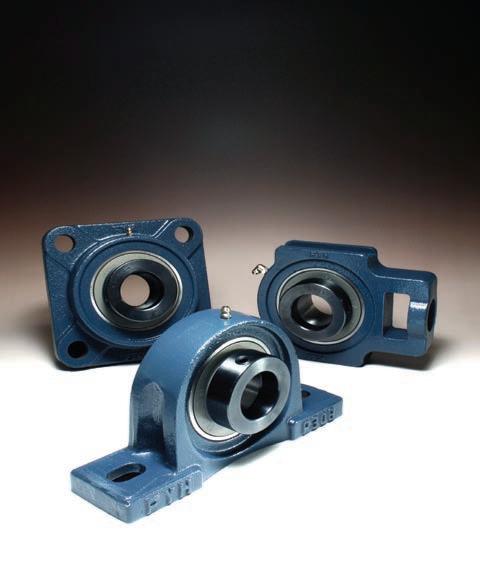

6 MRO / Spring 2023 MROMAGAZINE.COM
XtendaTM
Followers Hi-RollerTM Bearings enables us to respond rapidly to your requests. Our manufacturing can handle any size order. Our quality control procedures ensure consistent tolerances and our engineering expertise give you a deep knowledge base to draw on. • Standard Needle Bearing Cam and Cam Yoke Followers • Eccentric Stud Cam Followers • Heavy Stud Cam Followers • Neverlube ™ Cam and Cam Yoke Followers Your Resource for Precision Bearings BALL BEARING UNITS One of the world’s oldest mounted bearing manufacturer, they are available in wide array of sizes and styles. For Special Environments try Ceraball Hybrid Bearing Units good for up to 450° C (842° F) MONTREAL TORONTO WINNIPEG EDMONTON VANCOUVER (514) 685-6006 (905) 826-1100 (204) 694-1455 (780) 465-3311 (604) 294-3461 Fax (514) 685-6007 Fax (905) 826-9691 Fax (204) 633-7230 Fax (780) 490-4664 Fax (604) 294-4680 montreal@ringball.com toronto@ringball.com winnipeg@ringball.com edmonton@ringball.com vancouver@ringball.com MRO_RingballLeft_Spring23.indd 1 2023-02-28 11:19 AM
Stainless Steel Cam and Cam Yoke
(From left) Tim Larson, Bartek; Minister Neil Lumsden; MP Chad Collins; Minister Lisa Thompson; Hamid Goli, Jose Kafie, John Burrows, Jim Vincent, and Steven Chambers, Bartek; Minister Vic Fedeli.
O rganizations can spread awareness and educate workers about injury prevention, by using CCOHS web site, which has a collection of resources available at www.ccohs.ca/ events/rsi.
CLASSIC FIRE + LIFE SAFETY HIRING FOR NEXTSTAR ENERGY EV BATTERY PLANT

Classic Fire + Life Safety is pushing to recruit a minimum of 20 workers to help it deliver fire protection systems and services at the NextStar Energy EV batter y plant. The recruitment campaign kicked off February

24 at a hiring event.
“We’ve steadily grown our team over the past few years and we’re more than ready to onboard our next group of new recruits, this time from the Windsor area,” said Mike Van Eerde, Director of Construction Operations, Classic FLS. “I could not think of a better project through which to introduce our dynamic and exciting industry to new candidates.”
Classic FLS was named in July 2022 as the fire protection partner for NextStar. Located in Windsor, the EV battery plant is 4.5 million square feet and plans to begin producing modules in the first

quarter of 2024 and battery cells in the first quarter of 2025.
Classic FLS has been brought into the project by Alberici/ Barton Malow to install the sprinkler system, fire pumps and special hazard suppression systems. On-site work for Classic FLS is expected to start in April of this year. The project is expected to last 18 to 24 months.
AWARDS
ENDRESS+HAUSER CENTRE WINS AWARD
Endress+Hauser Customer Experience Centre in Burlington,
Ont., has won the Rethinking the Future Award 2022 in the Industrial (Built) category.
The 47,000 sq. ft. centre established a new sustainability standard for the company’s global portfolio of facilities. Official inaugurated in May, is also the first privately-owned project in Canada to pursue both ZCB Certification and LEED Gold simultaneously. It recently attained ZCB Certification, the standard demonstrating that a building has achieved zero carbon operations.
The site is anticipated to produce more energy than the facility will require on an annual basis. This is achieved through a combination of rooftop double-sided solar panels, heat pumps supplemented by a geothermal system, and energy conservation practices.
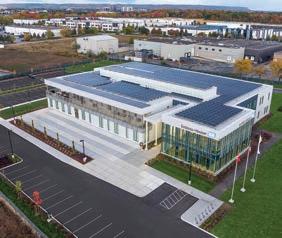
The Rethinking the Future annual award program aims to promote outstanding work in the field of architecture and design worldwide.
Quality bearings are only one aspect of RBL’s product line. We take pride in our products that encompass bearings, rod ends, bushings, sprockets, roller and leaf chains along with a range of power transmission products. To assure product availability and the best possible service for our customers, we have extensive inventories at our five regional warehouses.

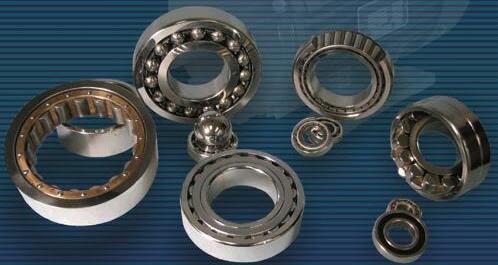
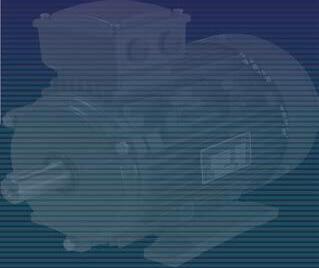
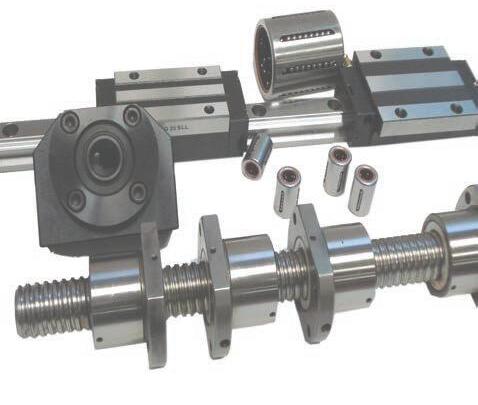
@MROmagazine Spring 2023 / MRO 7
Linear Rail Systems SBC Linear Rail System Ball Screw Support Units Linear Bushings Cross Roller Guide Robot Carrier Guide Linear Actuator
Products. Great Reputation.
DISTRIBUTED IN CANADA BY
Great
Ball Bearings
Cylindrical Bearings Spherical Roller Bearings Split Pillow Blocks
Adapter Sleeves Locknut & Lockwashers Slewing Rings Rod End Bearings www.ringball.com MRO_RingballRight_Spring23.indd 1 2023-02-28 11:28 AM
Ball Bearing Units Stainless Steel Units Spherical Plain Bearings Bronze Bushings
disorders affecting tendons, muscles, nerves and joints in the neck, upper and lower back, chest, shoulders, arms, and hands. They can happen to workers in all industries, manifesting over time from the repetitiveness of everyday movements like bending, twisting, clenching, and reaching.
How will tech advances conditioningimpact monitoring in 2023?
Maintenance departments have historically used condition monitoring to make maintenance decisions based on machine health and failure signals.
BY BRYAN CHRISTIANSEN
Condition monitoring
(CM)has evolved considerably from using human senses for monitor ing sound or vibration. The advance of digital technology in the 20th century enabled handheld monitoring devices, closely followed by hard-wired sensors using Ethernet networks.
Today, converging technology has further control and monitoring techniques. Wireless communication, product miniaturization, cloud computing, and artificial intelligence have all revolutionized CM capabilities
What does this technology mean for CM in 2023 and beyond?
CM market forecast
The CM market has always enjoyed steady growth, although in low single figures, with a historical compound annual growth rate of around 3.8 per cent. In 2022, the market size was approximately US$2.6 billion.
However, new technology and increasing competitive pressures are behind a growing manufacturing momentum for creating smart factories through digitalization. This pressure promises to double the growth in CM over the next decade, with forecasts suggesting the market will experience a compound annual growth rate of 7.5 per cent between 2023 and 2032. The 2032 market size calculated from these figures will be US$5.5 billion.

What factors are transforming the market?
This aggressive growth makes sense when we understand the wider context of the technology that enables and encourages business adoption.
Wireless technology
The 1990s heralded wired sensors to replace the handheld devices used to that point. These permanent fixtures reduced handheld detector errors and
poor repeatability, but at a cost. Large Ethernet and power networks needed to be installed, with strategically located data collectors.
The emergence of Wi-Fi and Bluetooth communication lowered network costs significantly, covering a large expanse of the factory floor with a few small wireless repeaters. System redundancy also improved, with some networks capable of choosing the strongest communication route.
Secure cloud computing
Moving data storage and application management to the cloud revolutionized maintenance automation. Removing on-premises ser ver centres and scaling back IT departments was a benefit. However, the true power of cloud computing lies in accessing unparalleled computing capability for complex computations — relieving end-users from needing high-end devices while offering rapid and almost limitless scalability.
Integrating equipment with IIoT
Third-party, purpose-built industrial Internet of things (IIoT) devices have accelerated the shift to remote control and monitoring capabilities. Today, system integrators only need to mechanically install a new sensor, connect power, and link the device to the wireless network using onboard connectivity. This true plug-and-play capability has removed the cost and turnaround time for installing smart systems. Reliance on OEMs has been reduced, allowing legacy equipment to be smart-enabled and removing the difficult issue of disconnected or islanded assets.
Predictive analytics
Improvements in the technology used to collect and analyze data have moved businesses beyond simply querying data to describe past events. Powered by cloud computing and advanced mathematical modeling tools, businesses can now gather, organize, and analyze large volumes of data to make predictions about an unknown issue. The results unlock data-driven decision making to reduce cost and risk while improving profits.
What to expect in 2023
Packaging together multiple technology solutions and adding advanced manuf actur ing capabilities has transformed machine control and
8 MRO / Spring 2023 MROMAGAZINE.COM
Photo: zapp2photo
DIGITAL MAINTENANCE FEATURE
/ Adobe Stock
monitoring capabilities. The following condition monitoring trends will continue to accelerate in 2023.
Increased wireless CM
Micro-machining capabilities create micro-electromechanical systems (MEMS) of a few millimeters in size consisting of microscopic moving parts. This miniaturization creates sensors of reduced size, weight, and power, at low cost. Operated by battery, they have in-built processors, sensors, and wireless capability with a low power requirement, a simple installation, and reduced deployment costs.
While data quality may not match that of piezo-electric sensors, MEMS-based sensors offer a cost-effective option for applying smart monitoring to legacy equipment. The ready availability of small, rugged, purpose-built third-party sensors will accelerate the implementation of CM in manufacturing and maintenance industries.
PdM and prescriptive maintenance
Using machine learning and AI to analyze operating equipment was once the domain of oil companies and aerospace organizations, requiring big budgets to monitor the condition of critical applications. Cloud-hosted machine lear ning and AI algorithms, coupled with commercial off-the-shelf solutions, have enabled companies of all sizes to reap the benefits.
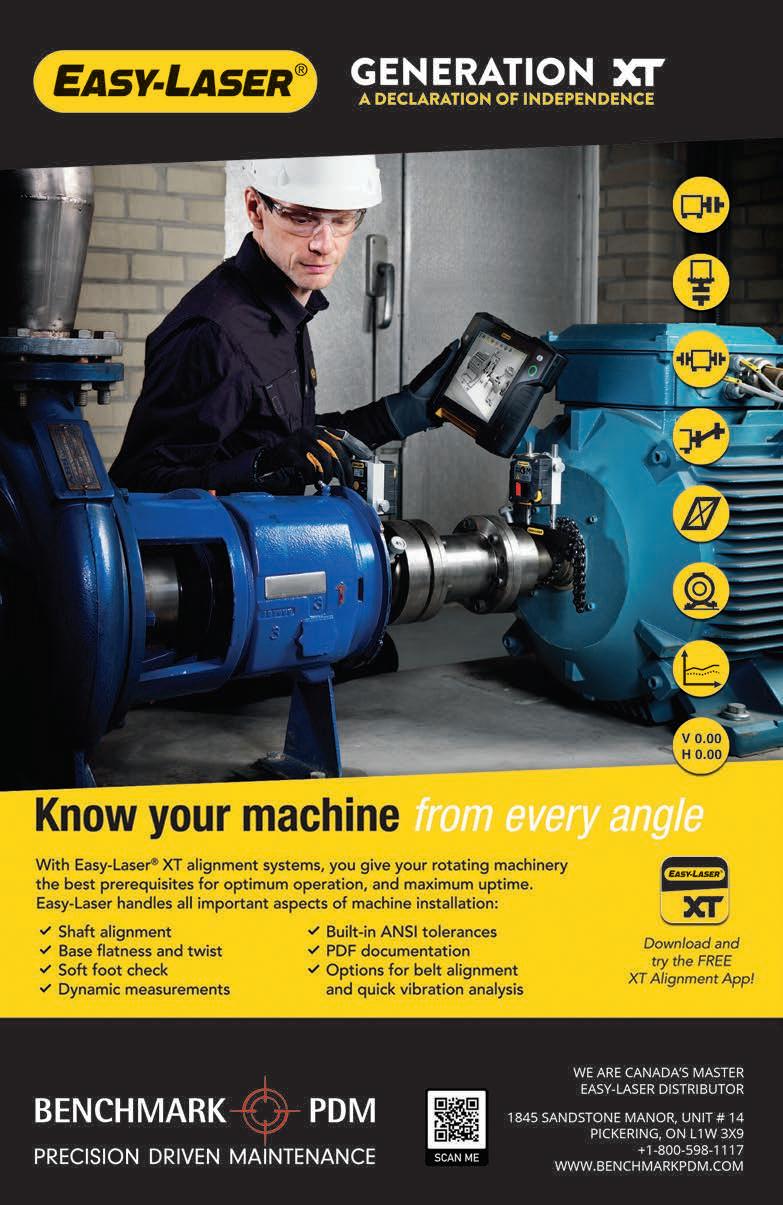
Cloud-based predictive analytics interrogates equipment service history and monitors equipment condition feeds in near real-time to identify nascent defects. The software predicts when the operating performance will degrade to a point requiring intervention but before failures and stoppages occur.
Soon, you can expect to move beyond predictive maintenance to prescriptive maintenance, where the analytics engine doesn’t just suggest when a failure will occur — it runs a range of scenarios and suggests the appropriate response through modifying operations or effecting a repair. Even now, we see automated actions taken without operator or technician intervention.
Increased data integration needs
Plant-wide CM and increased digital transformation efforts create large data volumes and infor mation silos. Expect to see organizations seeking greater integration between data from monitoring sensors, SCADA systems, HMI devices, and scheduling software.
A current trend is the use of computerized maintenance management system (CMMS) to provide this integration service. Modern CMMS has evolved to challenge the role of enterprise resource planning systems and enterprise asset management systems.
They contain the necessary integration and analytic capabilities to discern data patterns that inform maintenance and manufacturing decision making. Through 2023, organizations will seek to extend the capability of their CMMS as a rapid, low-risk, low-cost way to integrate their burgeoning data to allow greater insight.
Evolving competitiveness in manufacturing is driving businesses to exploit the oppor tunities IIoT-enabled CM offers. As
technology costs continue to reduce and turn-key third-party solutions proliferate, 2023 will herald considerable growth in the CM market — businesses seek greater production efficiency through reduced maintenance costs, increased equipment availability, and enhanced product quality
@MROmagazine Spring 2023 / MRO 9
Bryan Christiansen is the Founder and CEO at Limble CMMS (a mobile CMMS software company). He can be reached at bryan@limblecmms.com.
Laying the groundwork for safe forklift operation
BY
Forklifts are incredibly powerful machines – they are the workhorses of the warehouse, and have the power to move thousands of kilograms of goods at the direction of a sole operator. However, with that power comes the capacity for life-altering injuries, which is why thorough training , and in many jurisdictions, certification, is required.
Understanding regulatory requirements for training>
Requirements will vary depending on your jurisdiction, but forklift trucks should only be operated by experienced workers who are trained, certified or licensed to perform this task. Some jurisdictions specify a minimum operator age, while others require specific licensing. Check with your local occupational health and safety authorities for more information.
The CSA standard B335-15,
“safety standard for lift trucks”, includes the development and implementation of a lift truck safety prog ram, operator training requirements, qualifications of the lift truck trainer (including medical and fitness requirements), and maintenance and repair practices.
Identifying hazards
A good place to start with hazard control is workplace design, to help identify and assess potential hazards. Employers should take into account the volume of traffic in the work area – how many people will be working in the general area of forklift operation? Are aisles wide enough for the forklift to maneuver? Are areas adequately ventilated to remove exhaust fumes or byproducts from battery charging? If shelving has components that could hit or intrude into the operator area, those components should be addressed, along with any obstructions at inter sections and doors. Noise,
odours, toxic gases, dust, poor lighting, and ramps or flooring with different surfaces can also affect a worker’s ability to operate a forklift safely.
Workers in the general vicinity must also understand safety protocols when working around forklifts. Keep them safe by separating pedestrian and forklift traffic with designated walkways, and restricting people from entering areas where the forklift is operating. If separation isn’t possible, develop safe work procedures to protect workers when they must enter areas where forklifts are operating.
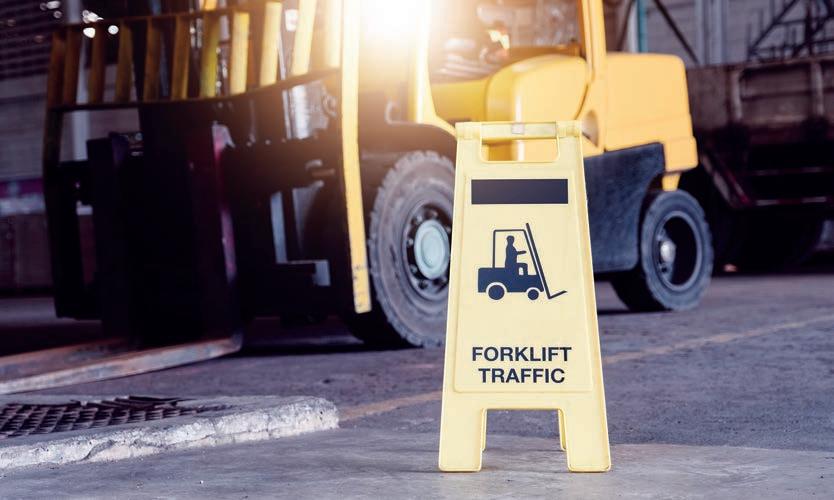
Pedestrians should always let the driver know they are in the area –making eye contact with the driver to ensure their presence is known and wearing high-visibility clothing. Be cautious near blind corners, doorways, and narrow aisles, do not walk near or under raised forks
Daily inspections
To avoid mechanical failures and other incidents, regular inspections are cr ucial. An operator should inspect the forklift truck every day, including at the beginning of each shift, and before each use. Before starting the forklift, the operator should carry out a visual or “circle” check, followed by an operational pre-use check.
During the visual pre-use check, the operator is looking for things like: general condition and cleanliness, fluid levels and potential leaks, battery condition, and bolts, nuts, guards, chains, or hydraulic hose reels that are loose, damaged or missing.
They should check the condition of propane equipment, the battery, chain anchor pins, and that seat belts, restraints and overhead guards are functioning properly. Wheels and tires should be checked for damage, and forks not bent or at different heights. Latches should be in good working condition, and the load limit should be clearly marked.
During the operational pre-use check, the operator is checking for operational hazards, such as brake function (foot brake, parking brake, and dead man set brake), clutch and gearshift condition, that lights and gauges are operational on the dash control panel, horns, back-up alarms and lights are operational, and that steering and lift and tilt mechanisms work smoothly. Any problems identified during the daily check should be repor ted to a supervisor immediately.
10 MRO / Spring 2023 MROMAGAZINE.COM
Photo: Thaspol
/ Adobe Stock
Operating a forklift safely requires that several factors be considered before a worker gets anywhere near the driver’s seat.
CANADIAN CENTRE FOR OCCUPATIONAL HEALTH AND SAFETY
SAFETY FEATURE
Regular maintenance
There are a number of safety procedures that need to be followed when performing forklift maintenance and service. Follow the manufacturer’s service and maintenance schedule, and allow only qualified personnel to car ry out the maintenance.

Wear proper personal protective equipment, such as goggles, face shields (with safety glasses), aprons, gloves and protective footwear. Before undertaking any work, disconnect batteries and prevent motion by raising the drive wheels off the floor, or using chocks or other truck-positioning devices. Before servicing liquefied petroleum gas forklifts, be sure to shut off the tank fuel valve. Run the engine until it stops, then disconnect the tank from the hose. Block the forklift securely when removing wheels, and support the forklift hood in the upright position or remove it. Keep the work area clean and well lit.
Other keys to performing maintenance safely: clean spilled oil or hydraulic fluid immediately, check all tools before using, remove all tools and parts before starting the engine, only use manufacturer-approved parts and components, and handle batteries with care, avoiding contact with terminals with metal objects.
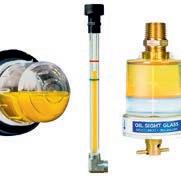
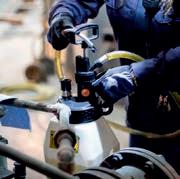
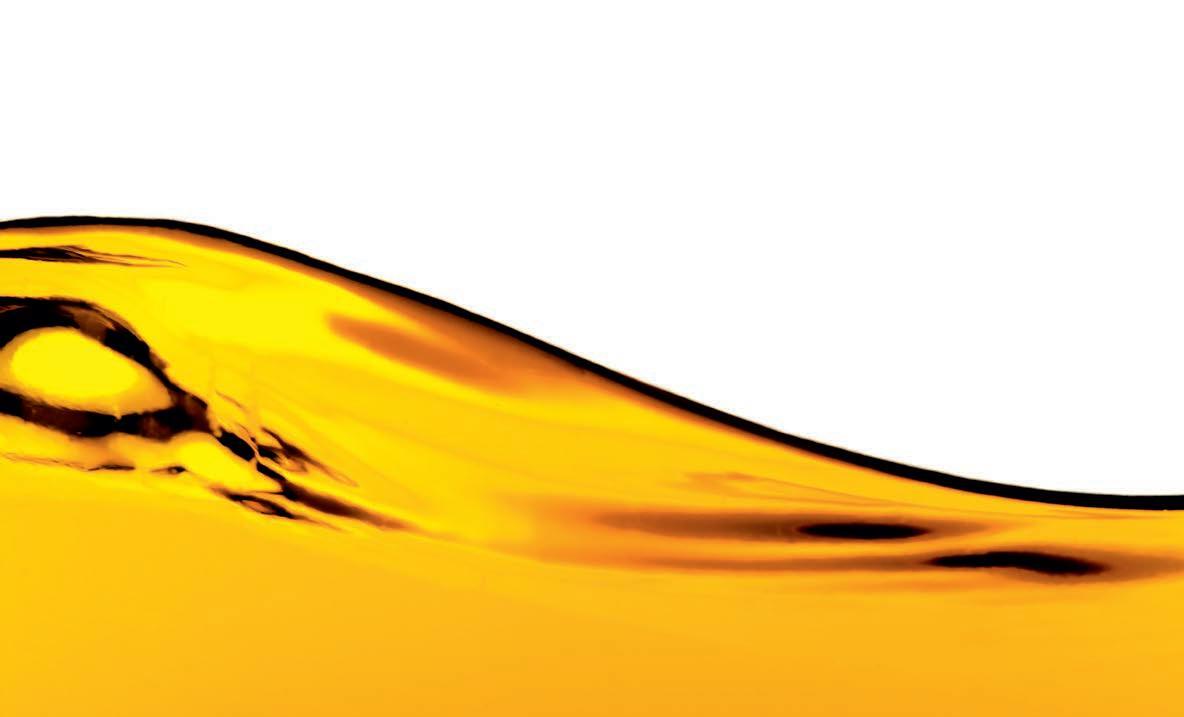
Check the operator’s daily checklist before making repairs, and be sure to find out why a forklift is in for repairs before starting or driving it.
It is important to develop workplace procedures, based on the manufacturer’s instructions and legislation, for

how to safely maintain and service a forklift. Procedures should also address activities such as battery charging, refueling and handling propane tanks, and how to respond in the event of an emergency. Once procedures are established, workers need to be thoroughly trained on them.
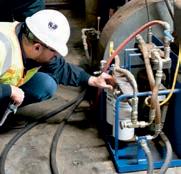
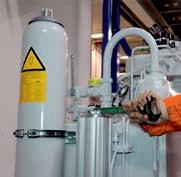

The safest workplaces have a common culture
The importance of thorough training for everyone who operates or works in proximity to forklifts cannot be understated. A great way to improve the safety of any workplace is to foster an “if you see something, say something” workplace culture. |
One that encourages workers to come forward when they see something that could compromise their own safety or that of their colleagues, without fear of reprisal. Create clear and safe mechanisms for reporting potential issues, and ensure all concerns are investigated and resolved appropriately.
With a safety-focused culture and thorough training program as your foundation, your facility and your workforce will be set up for efficient, productive, and most impor tantly, incident-free operations.
The Canadian Centre for Occupational Health and Safety (CCOHS) promotes the total well-being — physical, psychosocial, and mental health — of workers in Canada by providing information, advice, education, and management systems and solutions that support the prevention of injury and illness. Visit www.ccohs.ca for more safety tips.
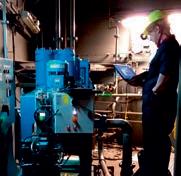
@MROmagazine Spring 2023 / MRO 11
FILTRATION RMF SYSTEMS OIL ANALYSIS CONDITION MONITORING TRANSFER BREATHERS STORAGE Achieving Lubricant Health & Cleanliness To Maximize Performance Powered by Wainbee expertise, Des-Case provides solutions for all the critical assets in your facility to ensure the equipment is always up and running. WAINBEE.com 1-888-WAINBEE (924-6233) Filtration Solutions for Every Application, Powered by Wainbee Expertise MRO_Wainbee_Spring23.indd 1 2023-02-21 3:12 PM
Maximizing efficiency: Building a business case for a downtime tracking system
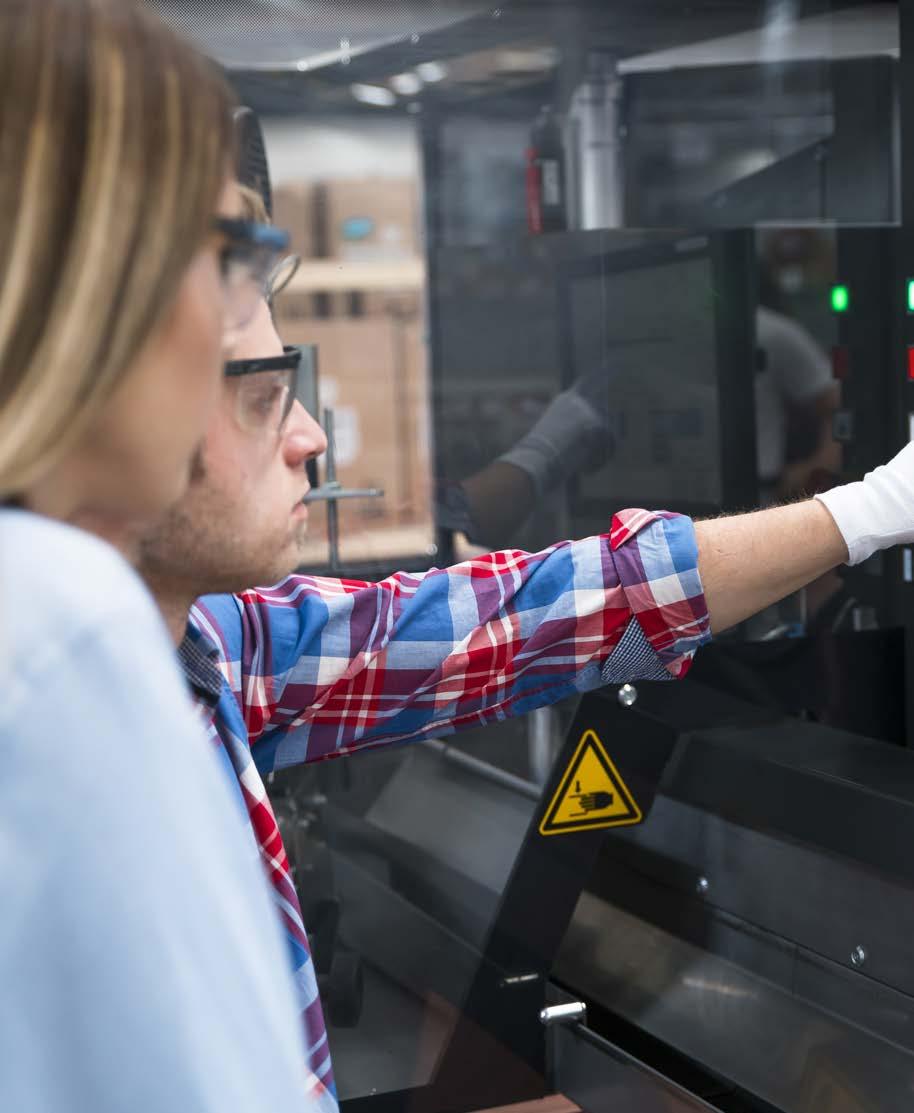
When it comes
delays
BY MATTHEW LINDSAY
Not only does downtime result in lost capacity and production opportunity it also drives increased maintenance cost. A survey found that 81 per cent of organizations believe that digital tools play a significant role in reducing unplanned downtime. Implementing a downtime system is the first step to gaining a better understanding of your operations and figuring out the root cause of lost capacity.
Building the business case for a downtime tracking system
A robust downtime tracking system is critical for improving the productivity of your operation and driving down costs. Any investment is subjected to a project evaluation to ensure the expected benefits outweigh the costs. However, the investment in a downtime tracking solution doesn’t directly result in a retur n on your investment. Rather, tools like this are an enabler for operations to more efficiently gather and manage their data and ultimately use that data to identify improvements in their business.
These three business cases can be used to underpin the development of a project authorization request.
Increase in running time
A typical way to quantify the value of a downtime tracking system is to predict the future increase in production time by implementing improvements uncovered by analyzing the downtime tracking data. Since the value of operating time varies from plant to plant, each business case needs to use the specific operating metrics for that plant.
Imagine a plant whose production rate is 500 tons per hour (tph) and net product value is $45 per ton. An increase from 90 to 91 per cent running
12 MRO / Spring 2023 MROMAGAZINE.COM
to manufacturing operations, unscheduled downtime and
can lead to significant production chain losses.
FEATURE DIGITAL MAINTENANCE
time would result in almost $2 million more in annual revenue for that plant. This one per cent operating time improvement is derived from the analysis of downtime data captured by an automated system.

A real-life example is a manufacturer who analyzed the data c aptured by their downtime system and found that operator breaks were taking on average four minutes longer than budgeted, resulting in an extra eight hours of downtime per month. They were
able to implement a break room countdown timer and reduce the average line stoppage due to breaks, which covered the cost of the downtime tracking system in the first four months.
Increase in production rate
Many operations track downtime events, but few also track when production rates fall below budgeted rates. This is due to the complexity of determining deviation in rates and the resulting productivity loss. Automated downtime tracking systems can be configured to trigger “slowdown” events based on actual and expected production rates. These systems then calculate the equivalent downtime so that slowdown events can be compared to downtime events in terms of lost production opportunity.
To calculate the benefit from increased production rates, the formula – (production rate increase X net product value X hours in a year X running time per cent) – can be used. It is recommended that capturing 15 to 25 per cent of the available rate opportunity is a typical performance improvement.
For example, a plant with a budgeted rate of 500 tph has an actual average rate of 476 tph, leaving an available rate opportunity of 24 tph. An increase of four tph (476 to 480) would have an approximate annual value of $1.4 M using the net product value of $45 per ton from our last example.
Slowdown event tracking provides a new data set for many operations who currently find it too complex or cumbersome to track. Capturing it through an automated system and analyzing the results can very quickly yield an improvement in asset productivity.
Improved staff utilization
A downtime tracking system can bring both direct and indirect benefits. The two business cases we’ve discussed are indirect benefits with the ability to uncover opportunities for increased running time and production rates. These benefits are realized because of the analysis of downtime data and implementation of solutions
derived from this analysis.
A direct benefit is the improved utilization of technical and operations resources to do more value-added activities, such as analysis and process improvement, rather than spending time on data management tasks. With manual and home-grown systems, the effort required to record, manage, and report on downtime and slowdown events can be substantial. This can lead to a sacrifice in the quantity or quality of downtime data.
A downtime tracking system automates much of the data management tasks, leading to a reduction in the time spent managing downtime tracking systems. This can be quantified by measuring time spent recording, managing, reporting, and cleaning downtime data, which can determine the potential savings in labour hours.

We typically see a reduction in technical staff effort of eight
hours per week to one hour per week and operating staff effort of 15 hours per week to three hours per week after implementing a downtime system, resulting in nearly 1,000-manhour savings per year.
Implementing a downtime system is vital for gaining insight into operations and identifying the root causes of lost capacity. Developing a business case can be difficult. Focusing on the potential benefits stemming from the subsequent data analysis in terms of increased running time and throughput is usually the easiest path. However, the reduced effort from technical and operating staff to produce the datasets and reports should not be ignored.
Matt Lindsay is a Client Manager with RtTech Software. Matt helps manufacturers integrate RtDUET into their operations to identify opportunities for process and reliability improvement.
WEAR PART SOLUTIONS
Shafts
Bushings
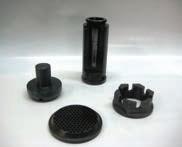
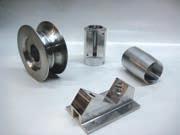
Rolls
Pulleys
Gears
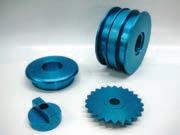
Sleeves
Bearings
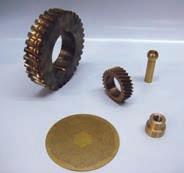
Spacers
Sprockets
Assemblies
Welding & Fitting
Custom parts MTO
3D Printing
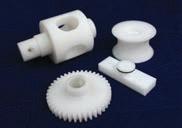
@MROmagazine Spring 2023 / MRO 13
Conventional machining New parts manufactured fast to reduce machine crashes & downtime. (Production or single unit) Precimax Ltd 2277 Leger, Lasalle, QC, H8N 2V7 | 514-365-5440 Send us your 3D or 2D drawing: info@precimaxltd.com Family run. 3 generations. Since 1974.
CNC &
CUSTOM
Photo:
BulentBARIS / iStock / Getty Images
Maximizing asset performance with a CMMS
track their assets’ maintenance history, schedule maintenance activities, and ensure that maintenance is performed on time and according to industr y standards.
EAM software, on the other hand, provides a more comprehensive solution that not only includes maintenance management but also asset performance monitoring, risk management, and financial planning. EAM software can integrate data from various sources, such as CMMS, SCADA systems, and sensors, to provide a more holistic view of an organization’s assets. EAM software can help organizations optimize asset utilization, reduce downtime, and extend asset life by providing actionable insights into asset performance.
Without proper asset management, companies risk downtime, equipment failures, and other costly problems that can impact their bottom line. To achieve optimal performance of your assets, it is important to implement a comprehensive asset management strategy that encompasses all aspects of your assets’ life cycle, from acquisition to disposal.
This strategy should include:
Asset tracking and inventory management
Keeping track of all your assets, their location, and their condition is crucial to ensuring their optimal performance. This information can be used to schedule maintenance, repairs, and replacements, and to make informed decisions about when to retire or upgrade an asset.
Preventive maintenance (PM)
Regular PM is essential to keep your assets running smoothly and minimize downtime. This involves scheduling regular inspections, lubrication, cleaning, and repairs to prevent breakdowns and extend the life of your equipment.
Predictive maintenance (PdM)
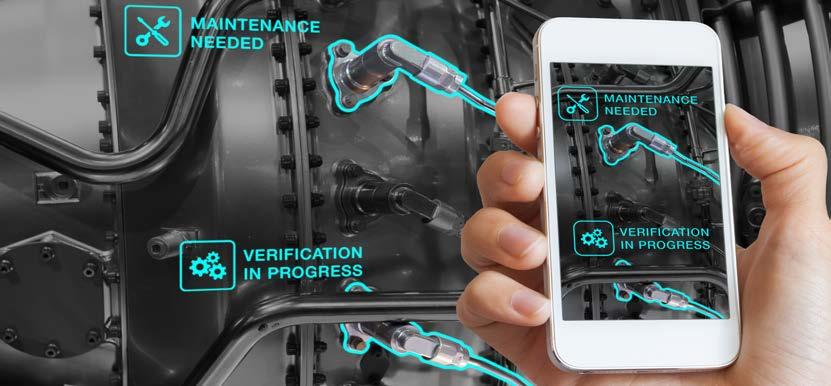
In addition to PM, PdM uses data analysis and other technologies to
predict when equipment is likely to fail and take corrective action before a breakdown occurs. This can help companies avoid costly downtime and extend the life of their assets.
Performance monitoring
Monitoring the performance of your assets can help you identify trends and areas for improvement. This can include tracking KPIs, such as uptime, MTBF, and MTTR.
Asset disposal
When an asset reaches the end of its useful life, it is important to dispose of it properly to minimize environmental impact and ensure compliance with regulations. This can involve selling, recycling, or disposing of the asset in an environmentally responsible manner. CMMS and EAM software are critical tools in implementing a successful asset management strategy. These software solutions can help organizations manage their assets more effectively and efficiently by automating many of the manual processes involved in asset management. CMMS is designed to automate and streamline maintenance management activities. It typically includes features for work order management, PM scheduling, asset tracking, inventory management, and reporting. These features can help organizations
In addition to CMMS and EAM software, other tools and technologies can also be used to support asset management strategies. For example, sensors and IoT devices can be used to monitor asset performance in real-time and predict when maintenance or repairs may be required. AI and machine learning algorithms can be used to analyze data from sensors and other sources to identify trends and patterns that may be indicative of potential asset failures.
Implementing a successful asset management strategy requires careful planning, investment in the right tools and technologies, and a commitment to ongoing improvement. By leveraging the power of CMMS, EAM software, and other tools and technologies, organizations can improve asset performance, reduce downtime, and ultimately drive greater business success.
It is also important to have a trained and knowledgeable team to manage your assets with the technology provided.This may involve hiring a dedicated CMMS administrator or providing training to existing staff, to ensure they have the skills and expertise needed to manage your assets effectively.
Ultimately, achieving optimal performance of your assets requires a comprehensive approach that encompasses all aspects of asset management, from acquisition to disposal. By implementing a robust asset management strategy, leveraging technology and data analysis, and investing in your team, you can ensure your assets are running at peak performance and contributing to the success of your business.
Article provided by TMA Systems.
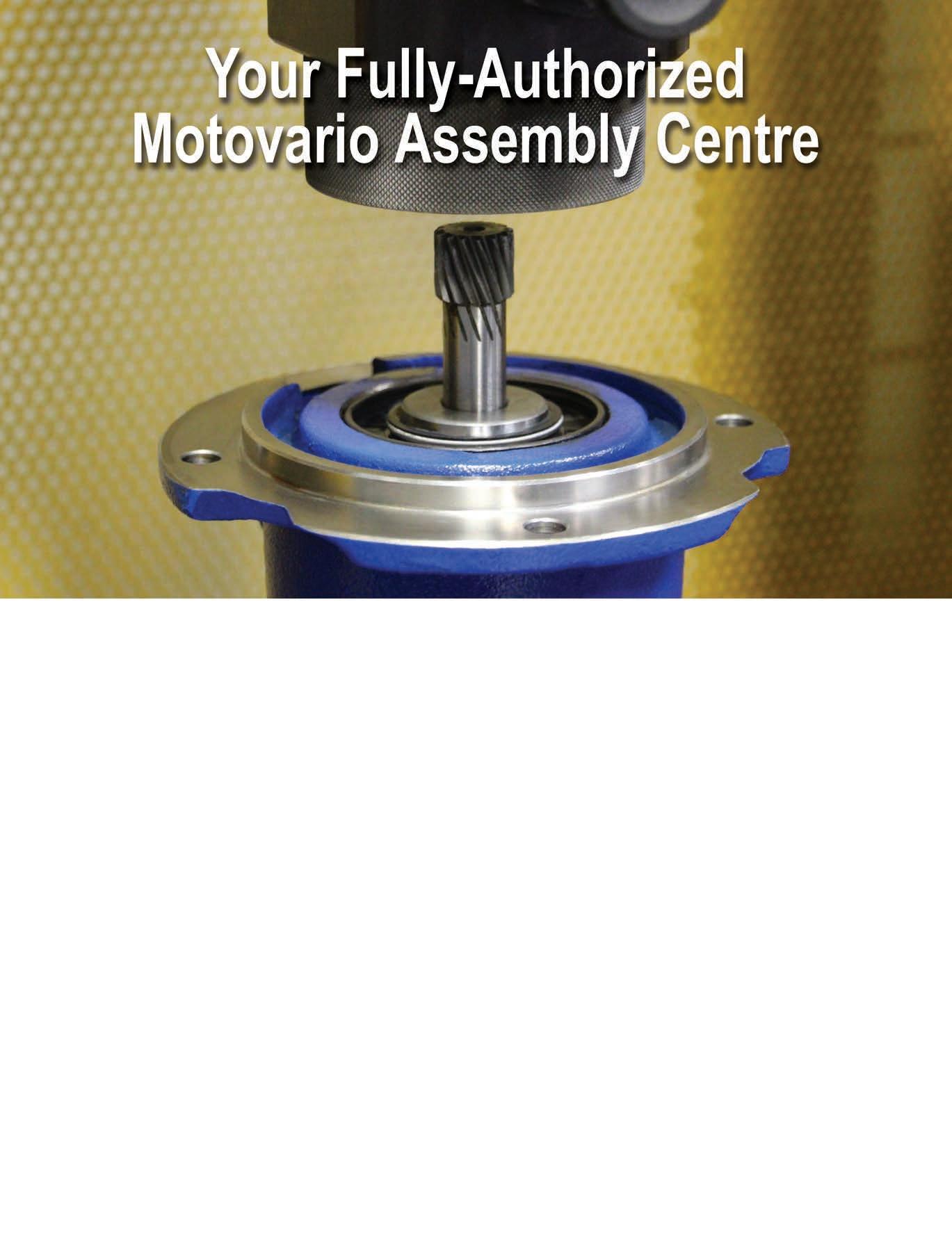
14 MRO / Spring 2023 MROMAGAZINE.COM
Photo: NicoElNino / Adobe Stock
Asset management is a crucial aspect of any business that relies on physical assets, such as equipment, machinery, or facilities, to operate.
FEATURE DIGITAL MAINTENANCE

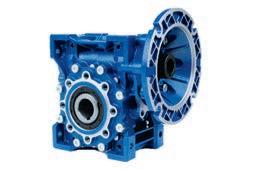
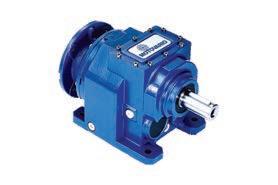
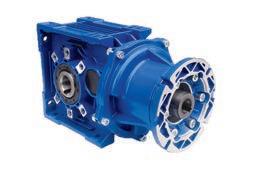
Sustainable maintenance practices
How to implement maintenance best practices and keep them in force year over year
BY PETER PHILLIPS
It would be impossible to cover every element of a successful maintenance program in one article. However, lets touch on four basic systems that every maintenance department needs to consider when they want a maintenance system that provides a high level of maintenance service and equipment reliability.
These four primary maintenance systems are the fundamental elements to a successful maintenance program. They are nothing new; however, many maintenance departments struggle to implement and sustain fundamental best practices that support the systems.
The four systems are work order management, preventive maintenance (PM), predictive maintenance (PdM), and inventory management.

Work order management
A work order management system needs to have a solid work order flow. The work order needs to be easily tracked from the time it enters the maintenance management system (CMMS) until it is planned, executed, updated, and closed in the CMMS. A work order flow needs to be developed where everyone in the work order process understands their role and responsibility to move the work orders through the system.
Sounds simple, but there are other factors that affect the success of a work order system. Maintenance departments often get overwhelmed by the shear number of work orders that accumulate in the system, day after day, week after week. When developing the work order system other factors influence the system effectiveness. They are:
Number of work orders - Maintenance departments struggle to keep up with the number of work order hours versus the number of available equipment hours, and the number of
technician hours in the labour pool. These factors affect the work order completion rate, which is a key performance indicator tracked by maintenance departments.
Focusing on 40 hours of PMs to complete in eight hours of available equipment time (one eight-hour shift). How many technicians working an eight-hour shift will be needed to complete all the PMs?
A simple equation can be used to calculate the number of technicians to achieve a 100 per cent PM completion.
# of technicians = 40 PM hours divided by eight hours of available equipment time.
In this case the equation calculates five technicians will be needed just to perform the PM work orders. Let’s remember there will be other maintenance to perform in the eight hours including repairs, modifications, and project work. If the technicians focus only on the PMs, the other non-PM work will not get done. If other nonPM work orders are scheduled, the PM completion percentage will suffer. It is impossible to complete the PMs and other work orders in the eighthour schedule and have a 100 per cent work order completion.
Therefore it’s easy to see how the number of incomplete work orders can start to add up quickly. To help decrease the amount of time needed to complete PM and PdM, maintenance departments need to review their preventive and predictive commitments and calculate the total number of labour hours needed to fulfill their obligations to the equipment. If there are substantially more hours of PM and PdM versus the number of technician hours available, then the completion rate will not be achievable. If hiring more technicians is not an option, the preventive and predictive maintenance systems will need to
be reviewed to determine if their schedules and tasks can be adjusted to match labour availability.
The next part of the equation is the available equipment time. If equipment availability is an issue, creative solutions will need to be developed in order complete PMs, PdMs and other work orders. Many manufacturing facilities have difficulty finding work for technicians when the production line is running, (unless there is a lot of re-active maintenance).
PM and PdM routines are often scheduled when the equipment is down. By examining the labour requirements of these two activities, maintenance teams have determined that many of the PM/PdM tasks can be safely done when the equipment is running. Rewriting and separating run time from down time work order activities can achieve two things.
- It reduces the number of equipment available hours needed to perform PM and PdM maintenance.
- It better utilizes technician hours. The growth of work order backlog causes the number of maintenance hours in the system to grow. These work orders that are passed their scheduled completion date need to be managed to reduce their total number. The work orders in the CMMS need to be continually reviewed to determine
16 MRO / Spring 2023 MROMAGAZINE.COM
Photo:Blue Planet Studio / Adobe Stock
MAINTENANCE 101 FEATURE
if they still need to be done. If they are legitimate, they need to be placed in the work schedule. If there are not enough technician or equipment hours available, it may be necessary to bring in outside contractors to reduce the backlog.
PM and PdM
The next two systems are PM and PdM. They both need to be continually updated and completely reviewed annually. Technicians need to be encouraged to update inspections when completing work orders and to inform the CMMS administrator when there are changes in the equipment so an inspection list can be modified.
The PdM system needs to show results, taking measurements and recording component data takes precious time from other maintenance activities. PdM data must monitor the health of the equipment and prevent component failure, if it does not, the PdM program needs to be reviewed. Many maintenance departments have embraced innovative technology that provides real-time analysis of the equipment and its components. For example, waiting for a monthly vibration report from an outside service is a thing of the past. Modern real time data collection and analysis has become cost effective and can identify impending failures.
Inventory management system
The fourth element is the inventory management system. Part outage or the inability to find a part in the stockroom is an on-going issue for maintenance departments. Part outages result in extended downtime, i nadequate repairs, and additional equipment downtime when the part comes into the plant.

Best inventory practices ensure the parts are on hand when needed, and the technician can find the part in a minimum amount of time. The benchmark for finding parts in the stock room is normally 90 seconds. The faster the part is located the faster the equipment is back in service. Organizing a stockroom can be a very labour-intensive undertaking. Most maintenance teams underestimate the resources needed to transform a stockroom into a proficient inventory system. A realistic plan is the only way to build a robust inventory system.
Putting it together
The last challenge is the sustainability of the four fundamental systems. Recently I worked with a fresh baked goods plant in Nova Scotia. Ten years ago, I helped them develop, plan and implement best practices for the four maintenance systems. The company
that purchased the plant wanted to know how after 10 years the maintenance team continued to use the best practices. How were the systems sustained year after year?
There are several reasons, the main influence is the maintenance management team. They are dedicated to the systems that were developed and they require the team to follow the best practices everyday. New personnel are introduced and educated in the four systems and how they contribute to equipment health and reliability. Their relentless attention to best practices has attr ibuted to their success.
These four maintenance systems are not new and sustainable maintenance practices are cer tainly not rocket science. Keeping these systems in play simply requires a commitment to develop, implement and continue to follow best practices year after year.
@MROmagazine Spring 2023 / MRO 17
Peter Phillips is the owner of Trailwalk Holdings Ltd., a Nova Scotia-based maintenance consulting and training company. Peter has over 40 years of industrial maintenance experience. He travels throughout North America working with maintenance departments and speaking at conferences. Reach him at 902-798-3601 or peter@trailwalk.ca.
Condition-based lubrication
BY DOUG MARTIN
When most millwrights are asked about greasing bearing, they answer “I put five shots of grease every six weeks”. Conversely, how often do you change the oil in your car? Typically, every six months or 10,000 kms. These lubrication schedules are both considered “time-based” lubrication or preventative lubrication. The goal is to get fresh grease or oil to the bearing before the existing grease or oil has “reached its useable life”.
Over time, calculations have been developed that allow a user to calculate a “grease-life”, based on how fast the bearing is operating, temperature, and other parameters, based on the applicant and the environment.
The calculation provides a calculated grease life with 99 per cent certainly that the grease will be functional at the time fresh grease is introduced. Therefore, there is a safety factor built into the calculation. It also means there could be an opportunity for improvement in efficiency in terms of less waste.
There have been developments in instruments that allow a user to “listen” to the bearing and quantify the “noise” generated, and in doing so, using this noise level to indicate that the bearing is experiencing metal to metal contact from the bearing needing grease.
One of the methods is the use of an ultra-sonic tool, which, by measuring the amount of sound (in decibels), and if that sound is higher normal, then grease is needed. Grease is added until the decibel level is reduced, and the
normal level is reached, or the maximum dose of grease is met.
Another method of condition-based greasing is using traditional vibration analysis tools and focusing on the enveloped acceleration. When the amplitude of the acceleration has increased, grease is added in the same manner, until the level of vibration in that envelope has reduced or the maximum grease dose has been added.
In both cases, if the maximum dose of grease has been added and the noise/acceleration amplitude has not changed, then it is time to further investigate the bearing for possible damage and the early stages of bearing failure.
Advantages and disadvantages
The advantage of condition-based greasing is the bearing is only getting grease when it (apparently) needs it. This certainly means that the amount of grease used can be reduced, and there are cases where the grease consumption has been reduced in half.
I used the word “apparently” because we know that with grease lubrication, the bearing is typically in starvation mode, the amount of oil bled from the grease is minimal. Therefore, the noise level measured is normal, and the issue is the grease being used does not have the appropriate bleed rate for the application.
Another disadvantage is that the lube tech must visit the asset to check and add grease more frequently. Instead of adding grease the time-based way every six months, the lube tech needs
to go to the asset every month, six times more often than the time-based strategy. If using the enveloped acceleration method; however, the vibration readings are already being taken by the vibe techs or the online system, and it is the existing data that can be used to drive the lubrication of the asset.
In terms of monitoring the condition of the oil, besides maintaining the oil level, having basic oil tests done will provide information on the lubricant condition, the level of contamination (and what the contaminants are), and the degree of machine wear that is occurring. In other words, besides getting the data about the oil condition (is the oil itself healthy and clean), you will also gain insight into the health of the machine by seeing the wear particles. Oil testing can drive oil changes and machine maintenance.
When to apply which strategy?
First, there is another lubrication strategy and that is continuous lubrication, which utilizes an automated lubrication system that feeds grease continually into the bearing. Continually means there is a certain amount of grease added to the bearing every day. Either from a slow continuous flow or periodic (for example, once an hour) would depend on the system selected.
With these three strategies, continuous, condition-based, and time-based, there is the decision when to apply them, and which machines to apply them to. To help in this decision, the criticality of each asset must be understood. What happens if this machine goes down? How does it affect the operation? Does it bring production to a halt? How long will it take to replace that asset? What is the cost of that asset being out of service?
From this, the most critical assets should get continuous systems, medium critical assets should get condition-based lubrication and the least critical applications should get timebased lubrication.

Another factor is availability of labour to perform these lubrication practices. Condition-based lubrication may the most labour intensive, but the savings on grease, and the increase in reliability may justify the labour expense.
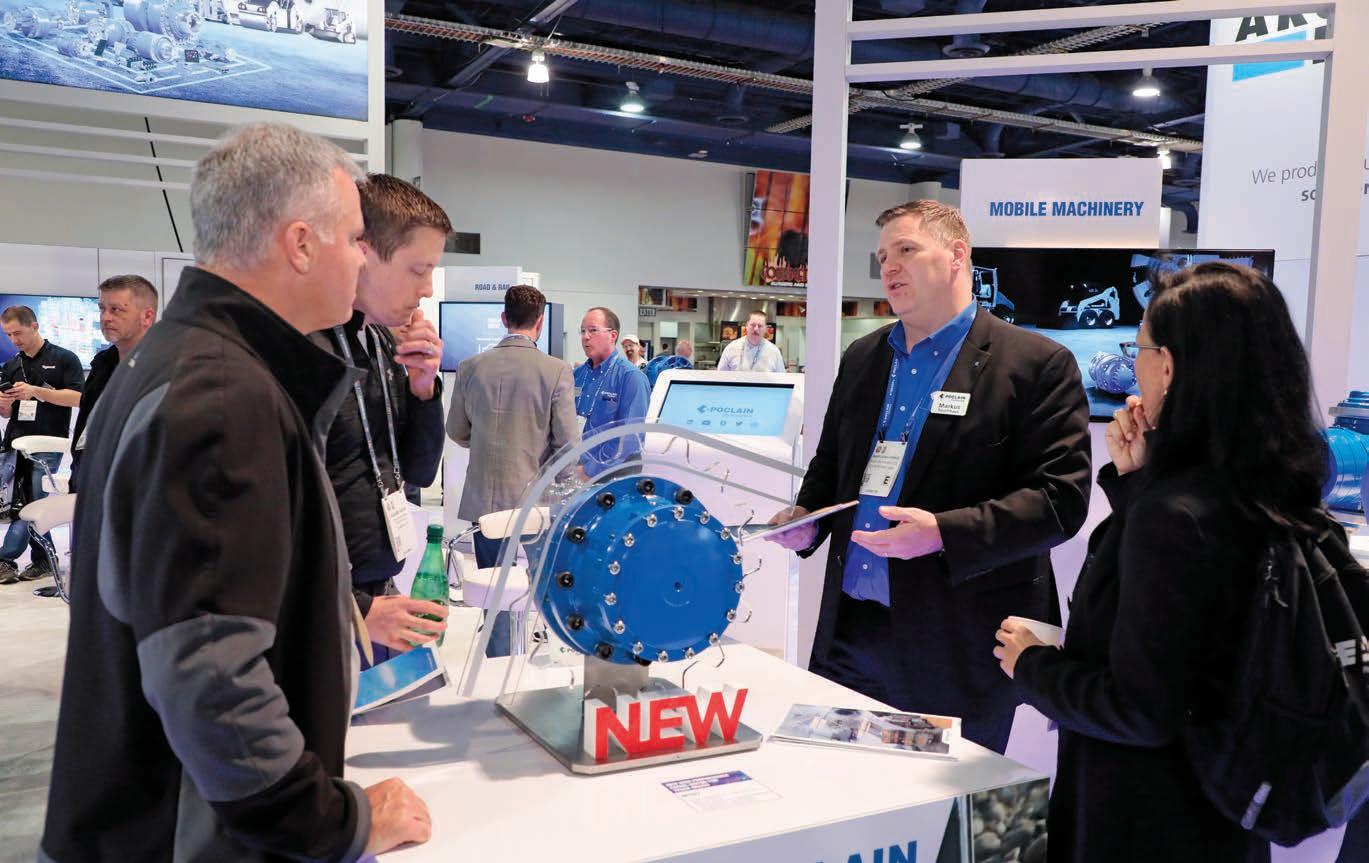
/ iStock /
18 MRO / Spring 2023 MROMAGAZINE.COM
Photo: Petrovich9
Getty Images Plus
WHAT’S UP DOUG FEATURE
Douglas Martin is a heavy-duty machinery engineer based in Vancouver. He specializes in the design of rotating equipment, failure analysis, and lubrication. Reach him at mro.whats.up.doug@gmail.com.
The #1 Trade Show & Conference for Fluid Power, Power Transmission, and Motion Control
CO-LOCATED WITH CONEXPO-CON/AGG (two shows, one price)
The International Fluid Power Exposition (IFPE) is the place where engineers meet to:

Spark new ideas with in-depth technical conversations with other engineers.
Discover solutions current suppliers can offer to your unique challenges.
Find new partners among suppliers pushing the envelope on what fluid power can do.
CONNECT WITH TOP MANUFACTURERS
Including Bosch Rexroth , Danfoss Power Solutions , Parker Hannifin , Poclain , IFM Efector , Hawe Hydraulik , Husco , and 375+ more!
Join your peers from these OEMs:
∙ Caterpillar Inc
∙ Volvo Construction Equipment


∙ Liebherr
∙ CASE Construction Equipment
∙ Komatsu
∙ John Deere Construction
∙ Doosan Bobcat
∙ KOBELCO Construction Machinery USA

∙ LBX Company
“ There’s no other show in the world I think that brings the OEM machine manufacturers and the suppliers as close together as this show. It’s a good place to meet and learn about what’s going on. In the Americas, in the Western Hemisphere, this is the show for fluid power.”
KEN ROSENBECKER SALES MANAGER NORTH AMERICA | WIPRO INFRASTRUCTURE ENGINEERING

IFPE only happens once every three years!
SAVE 20% OFF
REGISTRATION
Register now at IFPE.com and type AD20 in the Promo Code box
INTERNATIONAL FLUID POWER EXPO
14-18, 2023 LAS VEGAS, NV, USA
MARCH
Planning and scheduling solves staffing
Staffing is a huge problem for all of us.
BY DOC PALMER
Not only do we need to hire more maintenance craftspersons, but we also need them trained and ready to go. However, available craftspersons that are ready to apply their expert skills are not thick on the ground. Fortunately, proper maintenance planning and scheduling provides a dramatic help. But beware, the unusual concepts that enable proper planning and scheduling require active management leadership. Successful planning and scheduling are not grassroots-led efforts. The results are well worth the effort.
Over the years, everyone has “sized” their maintenance staff in the same way. The more frequently and louder that operators scream to fix breakdowns, the easier it is to decide to hire more mechanics, electricians, and instrument techs.Yet often, when we lose a crafts person to retirement or another company, we find ourselves not automatically replacing them. We reason that “we had 10 electricians and one left. Let’s see if we can get by with nine. You never know until you try.” However, as additional craftspersons leave and operator calls go up, we eventually scramble
to add more staff. By going up and down over time, we have “sized” our staffing merely to take care of urgent calls after they hinder profitable plant production.
Three problems ar ise in our ongoing staffing efforts. First, craftspersons that have left our companies are typically either the most experienced going into retirement, or the most capable that can more easily find another job elsewhere. Second, our tight labour markets have made it difficult to find skilled craftspersons. Third, any apprentice program takes time to develop less skilled and less experienced persons into the craftspersons we need.

Let’s go beyond thinking about replacing staff that tackles urgent work. The very definition of “maintenance” is “to keep assets functioning.” By letting assets lose function and triggering operator calls, we have become a “repair” staff instead of a “maintenance” staff. Therefore, maintenance professionals separate work into “re-active work” and “pro-active work.” Re-active work is work to fix a breakdown or otherwise remedy an urgent situation that cannot wait. Proactive work is work such as preventive maintenance (PM), predictive maintenance (PdM), and project work to keep things from losing function in the first place.
PM involves both routine servicing (such as filter changes to preclude problems from developing) and general inspections. PdM involves inspections using technology such as infra-red, ultrasound, or vibration analysis. Both PM and PdM inspections find little problems that can be remedied before operator s suffer any loss of function. Project work involves analyzing and replacing inherently unreliable equipment.
The 1:10 industry rule-of-thumb
20 MRO / Spring 2023 MROMAGAZINE.COM
Photo: Quality Stock Arts / Adobe Stock
FEATURE SCHEDULING AND PLANNING
The very definition of “maintenance” is “to keep assets functioning.” By letting assets lose function and triggering operator calls, we have become a “repair” staff instead of a “maintenance” staff.
is every one dollar spent on proactive maintenance saves 10 dollars on the bottom line. We grease a bearing at a convenient time due to a PdM warning instead of replacing the bearing, losing the pump shaft, and losing production. Enlightened management wants to go beyond operating as a merely “good” plant making a profit while continually fixing breakdowns. Proper management desires to become a “great” plant with an industry-leading profit by preventing breakdowns in the first place. However, the management staffing problem is, “how can we do extra proactive maintenance when we have our hands full of re-active work?”
Surprisingly, we have the extra staff available now, within ourselves. Industry studies show that the average productivity of maintenance forces at good plants is only about 35 per cent in terms of “wrench time.” Studies show that about 65 per cent of the day for available craftspersons is spent receiving assignments, gathering parts and tools, travelling to job sites, and breaks. Without taking away breaks, proper planning and scheduling together can boost the overall wrench time of a workforce to 55 per cent. Fifty-five divided by thirty-five per cent wrench time equals 1.57, meaning the new productivity is 57 per cent. That translates to a workforce suddenly completing 50 per cent m ore work than normal. That bump translates to a 50 person workforce doing the work of 75. The workforce gains 25 people, for free. Twenty-five people that do purely proactive work, and allow room for attrition.
However, before we start celebrating, we must answer the question, “If it is that easy, why isn’t everyone doing it already?” Three reasons: first, it’s hard to believe that normal wrench time is only 35 per cent. Second, we errantly strive for plan perfection. Third, we misunderstand the real pur pose of scheduling, and make scheduling too complicated. These reasons mandate that proper programs be
management dr iven. Planning and scheduling will never be grassroots demanded effort.
It is honestly hard to believe that wrench time could be only 35 per cent in a good maintenance force. Structured work sampling studies confir m nearly every maintenance group is at 35 per cent. It is also interesting that the 35 per cent rate exists across industries and national cultures. This similarity is because we all have “sized” our maintenance forces over the years “to keep people busy.” Humans normally feel “busy” at about 35 per cent actual wrench time.
For planning itself, most companies miss the mark. They implement planning to identify “all the steps necessary for the proper completion of the work.” But no one is perfect and craftspersons also resent planners telling them what to do. Most programs collapse in frustration.
Instead, we must implement planning as a cycle of im provement. Planners expressly g ive “head starts” and expect craftspersons to exercise their skills, experience, and judg ment. After job completion, we expect craftsper sons to suggest improvements for the next time we do the work. The planner becomes a craft historian to im prove plans over the years, not a “perfect plan provider.”
Unfortunately, having better plans over the years does not improve wrench time. We must also schedule enough work each week because of Parkinson’s Law (the amount of work assigned expands to fill the time available). Proper weekly scheduling is simply giving each crew enough work to fill its available hours. For example, we would give 400 hours of planned work to a crew with 400 hours of labour capacity for next week. Here again, we commonly miss the mark.
Most companies think by insisting on good schedule compliance, they do proper scheduling. These companies commonly under-load the schedule to achieve high schedule compliance. Then they do not defeat Parkinson’s Law, they remain at 35 per cent wrench time, and they do not get the 50 per cent pop in work order completion rate. It is far better to fully load the schedule and see schedule compliance below 90 per cent.
In addition, most companies make daily schedules a week ahead of time, which they must revise daily. It is more effective to make a simple list of work for the week. Leave crew supervisors alone to create their own daily schedule as the week unfolds.
We can see why proper planning and scheduling requires decisive management leadership. We must accept that simply fixing things after they break is wrong. We must accept that our productivity is only a surprising
35 per cent. We must run planning with imperfect plans that get “better” over the years.

We must fully load schedules that we know will have low scores for schedule compliance. However, the gains are fantastic. We can really achieve a 50 per cent increase in our workforce, for free. This added workforce completes proactive work that grossly reduces breakdowns and we become a great plant with superior profits. We already have this competitive edge potential within ourselves. Increase your workforce without hiring. Be a great plant.
Doc Palmer, PE, MBA, CMRP is the author of McGraw-Hill’s Maintenance Planning and Scheduling Handbook and helps companies worldwide with planning and scheduling success. For more information about online help and currently scheduled public workshops including Alberta and Ontario visit www. palmerplanning.com or e-mail Doc at docpalmer@palmerplanning.com.
@MROmagazine Spring 2023 / MRO 21
MRO_DavleyDarmex_Spring23.indd 1 2023-02-28 2:18 PM
We must run planning with imperfect plans that get “better” over the years.
Understanding lubricant additives and their function

Formulated lubricants are various combinations of base oils and additives.
BY L. (TEX) LEUGNER
Additives reduce friction, dissipate heat, keep machine components clean, suspend carbon, sludge and varnish deposits and prevent metal damage due to wear, oxidation, and corrosion. Depending on the application, chemical additives will make up anywhere from 10 to 25 per cent of the lubricant. Equipment maintenance technicians and mechanics should have a full understanding of the type and purpose of additives in lubricants. Certain metallic additives used in lubricants also reflect certain metals in equipment components and it is important to know the metallurgical makeup of the components in the plant equipment so as not to confuse a metal component with an additive element. For example, molybdenum is used in some lubricants as an anti-wear additive and can also be found as a surf ace coating on some piston rings. The additive types and their purposes are outlined below in the quiz questions.
Q | Can the equipment maintenance technicians provide examples of chemically active additives?
LOGIC: Chemically active additives are those that can interact chemically with the metal components to form a protective film by either adsorption or absorption; these include dispersants, detergents, anti-wear and extreme pressure agents, oxidation, rust, and corrosion inhibitors. Adsorption is the plating out of an anti-wear additive on a metal surface to provide a protective film. Absorption is the assimilation of an additive into the lubricant to improve a specific requirement such as that of adding friction modifiers to the lubricant itself.
Q | Does the maintenance technician know the chemically active additives that are listed on the oil analyses reports that are used to monitor equipment condition?
LOGIC: Common additives used in industrial lubricants are detergents such as sodium, magnesium, manganese, calcium and barium. However, be careful when interpreting oil analyses reports, because these elements sometimes confirm other conditions; for example, sodium is sometimes used as a coolant additive. Magnesium is used as a constituent
in certain aluminum alloys. Boron is used as an anti-freeze additive, a chemically active extreme pressure additive, while some boron additives are being used to reduce zinc dialkyl dithiophosphates (ZDDP).
Q | Can the equipment maintenance technician describe the purposes of chemically inert additives?
LOGIC: Chemically inert additives enhance the physical properties of the base oil itself to improve the lubricants performance, primarily through absor ption. These additives include emulsifiers, demulsifiers, pour-point depressants, foam inhibitors and viscosity improvers. For example, viscosity improvers are used in all multig rade oils to minimize changes in viscosity when temperatures change.
Q | Does the maintenance technician know the purpose of chemically inert additives that may be listed on the oil analyses reports?
LOGIC: Silicon is used as an anti-foam additive, but it is also used as an additive in some anti-freeze coolants, so if this appears on an engine oil analysis report in a higher-than-normal trend, it might indicate a contamination problem.
Q | Does the maintenance group have a lubrication specialist who understands the correct interpretation of the terms used that represent both chemically active and inert additives?
LOGIC: For example, ZDDP are oxidation and corrosion inhibitors and anti-wear additives. This additive is represented on an oil analyses report as ZDDP. The anti-wear element titanium may be found in some oils reducing ZDDP levels. Phosphorus is widely used as both an anti-wear and extreme pressure additive and depending on the oil analyses laboratories reporting system, may simply be shown as P on the report.
Q | Does the maintenance group have a specialist who understands the relationship between various additives and their ability to prevent oxidative or nitration conditions in the lubricant and how these might affect the equipment?
LOGIC: Acid number (AN) is a
22 MRO / Spring 2023 MROMAGAZINE.COM
Photo: H_Ko / Adobe Stock
FEATURE MRO QUIZ
measurement of the acidic derivatives that cause oxidation of any industrial oil and is indicative of its remaining useful life. The oxidation of oil begins as hydroperoxides, and carboxylic acids develop result, and the oil begins to darken in colour. The AN of industrial oil is usually reported on the oil analyses report as TAN and a guideline for its use is that when the AN double that of the new oil’s AN, it is indicative that the service life of the used lubricant is over.
Q | Does the maintenance group have an engine lubricant specialist who understands the relationship between detergents and dispersants and their neutralizing ability?
LOGIC: Base number (BN) is a measurement of the reserve alkalinity remaining in engine lubricants and is directly related to the detergent/dispersant additive package and its ability
to counteract acids, sludge and varnish and is reported on the oil analyses report as TBN.When the base number has been reduced by one-half of that of new oil, the used lubricant should be considered no longer serviceable.
Q | Does the maintenance group understand that lubricant analyses must include the quality of the lubricant itself, not only equipment wear condition?
LOGIC: Monitoring AN and BN respectively are excellent indicators of the lubricants remaining life and should be included for all oil analyses when oil quality and service life are important, such as when considering an extension of oil drain intervals. Monitoring the increase of AN or the decrease of BN respectively are the standards to apply.
Q | Does the maintenance group understand that lubricants contain additional
additives that serve to protect more than just the lubricant itself, or the condition of the equipment?

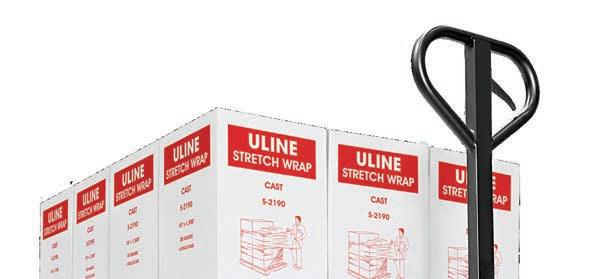
LOGIC: Rust inhibitors provide a barrier between metal surfaces and harmful elements such as air or moisture. Sulphur is used in some extreme pressure oils and metal working fluids. It can be corrosive to yellow metals and the additive thiadiazole is in use to protect yellow metals found in worm gear drives. Others are pouring point depressants and viscosity index improvers, both helpful in ensuring that lubricant viscosities are maintained, particularly in northern climates where temperatures vary dramatically.
Finally, certain oil seal materials are not compatible with some lubr icants, and it is important that replacement oil seals are of the correct type. Common seal materials are fluoro-elastomers, nitrile-rubber, polyacrylates and silicones. Certain base oils and additive systems can cause
seals to shrink or become brittle and it is important that industrial lubricants contain both the correct type and amount of seal swell agents, such as polyesters or phosphorus derivatives.
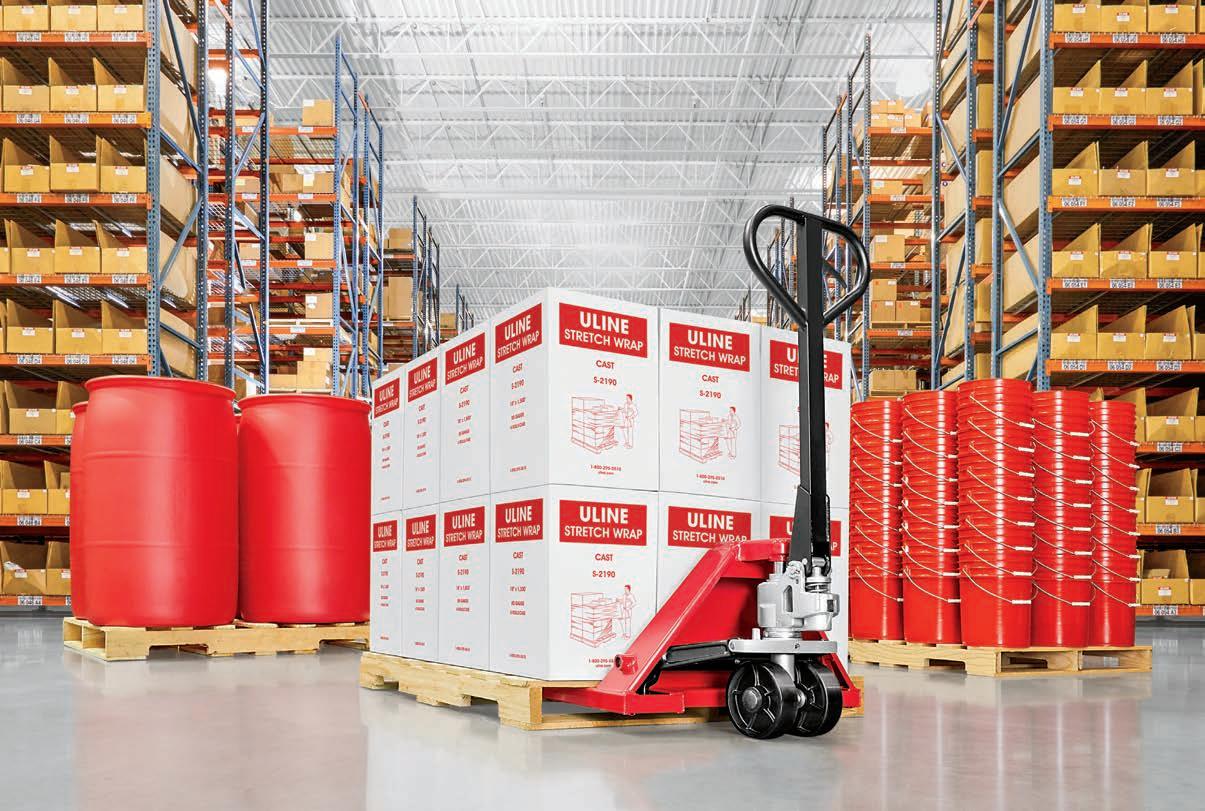
A final word of advice; become familiar with the lubricant data sheets for the lubricants used in your plant equipment. Depending upon the lubricant manufacturer, these documents frequently list the additives used and new oil specifications of base or acid number, viscosities and pour points. Know and understand the purpose of oil additives.
L. (Tex) Leugner, author of Practical Handbook of Machinery Lubrication, is a 15-year veteran of the Royal Canadian Electrical Mechanical Engineers, where he served as a technical specialist. He was the founder and operations manager of Maintenance Technology International Inc. for 30 years. Tex holds an STLE lubricant specialist certification and is a millwright and heavy-duty mechanic. He can be reached at texleug@shaw.ca.
@MROmagazine Spring 2023 / MRO 23 23_000705_MRO_Canadas_Maintenance_Voice_SPR_CN Mod: February 1, 2023 2:26 PM Print: 02/16/23 page 1 v2.5 π COMPLETE CATALOG 1-800-295-5510 uline.ca ORDER BY 6 PM FOR SAME DAY SHIPPING SERVING CANADA FROM CANADA MRO_Uline_Spring23.indd 1 2023-02-21 11:10 AM
WHAT’S NEW IN PRODUCTS
CHEMLINE PLASTICS ALFARAPID GROOVED END PIPING SYSTEM
compartment so the installer can bypass the screw cover. Two mounting options are available — yoke brackets and a pendant kit. Rigmaster LEDs feature a looping safety cable through the fixture and around the mounting structure that secures it from falling onto employees or equipment. emerson.com/appleton
KASON CENTRI-SIFTER M1
Chemline Plastics AlfaRapid grooved end system of mechanical piping connections – pipe clamps, fittings, and valves.
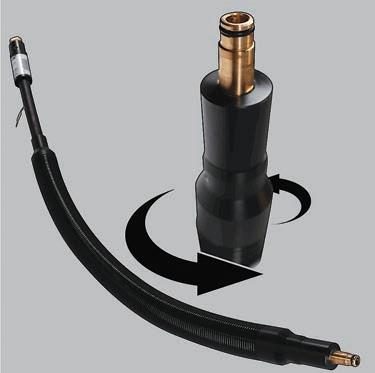
Flexible pipe couplings are constructed of high-strength, glass-reinforced polyamide and stainless-steel bolts. They offer alignment, installation, and disassembly. They compensate for expansion, shrinkage, and bending. The coupling gasket acts as a damper to reduce vibration and noise. Complete range of grooved end pipe fittings in polypropylene are available.
Coupling sizes: 1 ½” – 6”
• Valve and fitting sizes: 1 ½” – 4”
• High pressure rating: 230 psi (PP fittings and valves, 507-580 psi
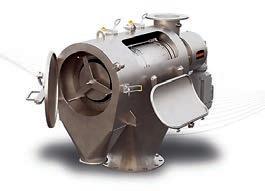
• Materials: pipe clamps: PAG/EPDM; fittings: PP (also PE100 and PPR adaptors); and valves: PP/ EPDM or PP/FKM. chemline.com
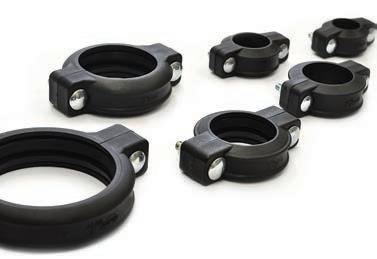
EMERSON APPLETON RIGMASTER LED LINEAR LUMINAIRES
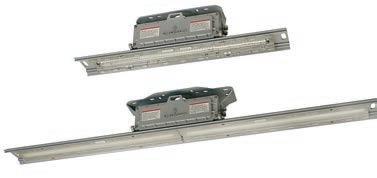
Kason’s Centri-Sifter M1 centrifugal sifter sifts, scalps, de-agglomerates and dewaters granular materials ranging from dry bulk solids to solidsladen slurries.
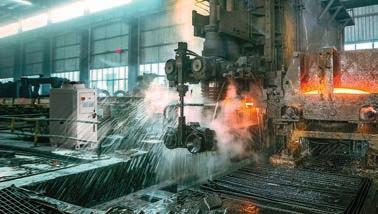
Centri-Sifter M1 is engineered for one-person operation and maintenance. It features a capacity of up to 15,000 pounds of dry material and up to 50 pounds of wet gallons per hour.
Centri-Sifter M1 offers: a redesigned gearbox that reduces the length of the M1, fast screen replacement, quick removal of internal components, seven per cent more torque than its predecessor, stainless steel construction, a large diameter shaft and wide spacing between bearings, and screen baskets with wire or synthetic screen mesh or heavy-duty wedge wire or perforated plate. kason.com/centrisifter-m1.
PFANNENBERG EB 2.0 ECO CHILLER
The Appleton Rigmaster line is comprised of three versions: An explosion-proof model for Class I, Division 1 locations, a hazardous location luminaire for Class I, Division 2 areas, and an industrial, ordinary location version. An optional emergency battery backup provides up to 180 minutes in safety lighting. All three solutions meet IP rating requirements.
When compared to conventional T8 fluorescent fixtures, Appleton Rigmaster LED linear luminaires consume less than half the energy, reduce maintenance and replacement costs. LED life is over 60,000 hours.
Its mounting brackets accommodate most bolt patterns for other luminaire manufacturers when retrofitting older fixtures. Its hinged wiring compartment is secured with captive screws. Two NPT hubs on each end of the fixture allow for through wiring. Leads are placed outside the wiring
Pfannenberg’s EB 2.0 ECO Chiller uses inverter technology in the compressor, that works to ensure a direct response to cooling demand, minimizing energy waste. Range of cooling capacity is increased which extends the product’s lifespan. Designed for indoor and outdoor operation, the chiller design suited for heat dissipation in combination with passive indoor cooling systems (PWS/PWW).
EB 2.0 ECO features a hot gas bypass refrigerant circuit, internal hydraulic bypass circuit, and non-ferrous hydraulic circuit. The electrical tank level switch and coolant flow switch simplify operation, along with the programmable smart
controller and wired remote control. It uses R410a refrigerant and features a micro-channel condenser.
EB 2.0 ECO product design is based on customized units. It can also be utilized in small battery storage applications for uninterrupted power storage/ backup for personal computers.
pfannenbergusa.com/liquid-cooling/eb-serieseco-chillers/
TELEDYNE LADYBUG6 CAMERA
Teledyne FLIR Ladybug6 360-degree camera is now in production.
Ladybug6 is a high-resolution camera designed to capture 360-degree spherical images from moving platforms in all weather conditions. Its industrialgrade design and out-of-the-box factory calibration produce 72 MP images with pixel values that are spatially accurate within +/- two millimetre at a 10-metre distance.
flir.com/products/ladybug6/
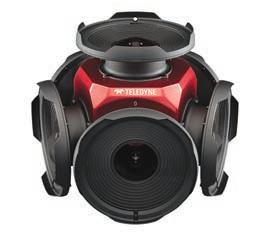
TELEDYNE LADYBUG6 CAMERA
Tregaskiss’ updated LSR+ (low stress robotic) unicables with SmoothTurn technology for use with TOUGH GUN TA3 robotic MIG guns, reduce friction on the internal components in the power cable, increasing overall cable life up to 300 per cent. LSR+ unicable has a rotating power connection to reduce stress. Improved electrical connections ensure a more stable arc, with reduced spatter. Internal components increase power cable support and bend radius. Addition of a protective external conduit extends cable life by guarding components against harsh elements in the robotic welding cell. tregaskiss.com
24 MRO / Spring 2023 MROMAGAZINE.COM
POLYAMIDE GEARS AND GEAR RACKS

system is a flexible gravity conveying system with self-tracking skate wheels. The system is designed for low- to medium-volume, multi-sized conveyance operations.
ILME SQUICH INSERTS
JW Winco introduced the spur gears EN 7802 and gear racks EN 7822 made from polyamide. Due to their low friction coefficients, these require no lubrication and are made of FDA-compliant glass fiber-reinforced plastic. The components are also available in gray or blue.
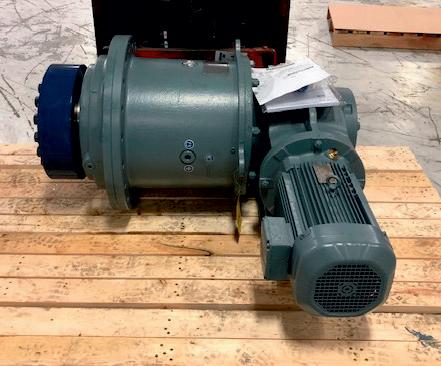
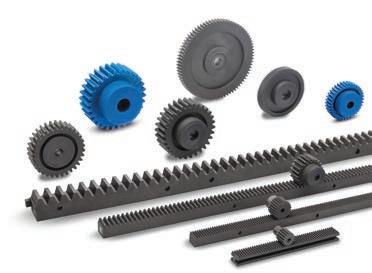
The polyamide gears and racks are designed for temperatures up to 248 °F (120 °C) and for contact with acids, gases, and saltwater. Plastic gears are lighter and more economical than metal gears. The gears and racks are designed as an involute gear with a 20° angle, and the design structure helps to reduce torque variation and allow for greater assembly flexibility.
Gears EN 7802 designed in module sizes from 0.5 to three. Polyamide gear racks EN 7822 can be ordered with module sizes from one to three and feature a steel core. jwwinco.ca
BPS BULK BAG FILLERS
It can be extended, contracted or flexed into curves to meet specific material handling requirements.
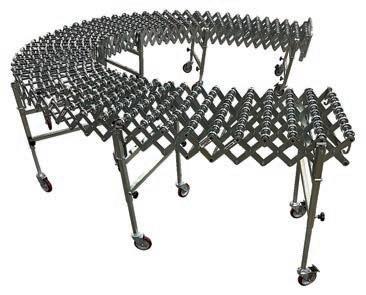
“FlexExtend is fully customizable to meet our customer’s conveyance needs and will include options for conveyor rollers and dock accessories for maximum efficiency,” said Tim Swineford, President, Ashland Conveyor, a ProVeyance company. proveyance.com
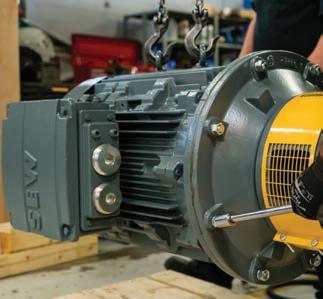
ILME SQUICH push-down inserts have easy quick-connect solutions for industrial machinery in rugged industrial environments. SQUICH pushdown technology allows for no tool to install solid and or stranded wires (up to 14AWG) to the contacts in the connector.
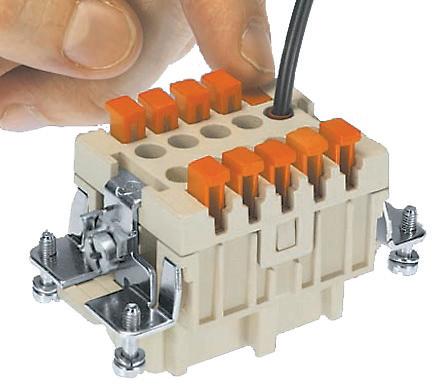
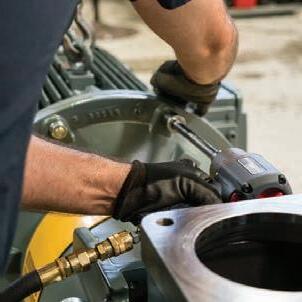
It offers reduced wiring time, no need for wiring tools, is resistant to vibration, and is suitable for any wire. itcproducts.com
Bulk bag fillers from Best Process Solutions, Inc. (BPS) fill any size bulk bag with high accuracy, with trouble-free maintenance.
BPS Model BBF loader features an inflatable fill head offering a dust-free seal when loading, dust port with dust cartridge, and manually adjustable bag supports for varying bag heights. bpsvibes.com
PROVEYANCE GROUP


FLEXEXTEND CONVEYOR SYSTEM
ProVeyance Group’s new FlexExtend conveyor

25 MRO / Spring 2023 MROMAGAZINE.COM
Visit mromagazine.com/products for more industry news and events. TORONTO · MONTREAL · VANCOUVER sewcan.ca | sew-eurodrive.ca THE POWER OF A GLOBAL SERVICE NETWORK M EDIA CIAL SERVICE 24/7/365 UNSTOPPABLE LARGE INDUSTRIAL GEARS Worldwide IG service means, we’re already there. MRO_SEW Eurodrive_Spring23_CSA.indd 1 2023-02-16 2:47 PM
MRO Pro Tip 1 Leverage AI toward zero downtime
BY MO ABUALI
One minute of unplanned downtime and a fraction of unwanted scrap can yield significant financial losses for any manufacturer. Tapping into your connected assets’ data and implementing predictive analytics using AI and machine learning tools will take the guesswork out of production and maintenance planning, replacing it with accurate predictions allowing for a worry-free manufacturing process.
A comprehensive Industry 4.0 “smart factory” strategy revolves around plantfloor connectivity and data ingestion to machine-monitoring and predictive maintenance technologies. This setup provides real-time OEE performance metrics, and delivers predictive insights into machine and component health, remaining-useful-life prediction, and root cause failure diagnostics. Such a use case can provide early fault detection and prediction and assist manufacturers in using AI tools to transform maintenance activities from a “fail and fix” to a “predict and prescribe” paradigm.
As the use of predictive analytics matures within the organization, the ability to achieve prescriptive analytics becomes possible, allowing real-time decisions to be prescribed from the analytics. This includes feeding data back to the machine in real time, to automatically reject a part that’s predicted as a defect, or to offset the machine recipe/ program parameters to maximize uptime and quality of the process.
Given the complexity and variety of manufacturing processes, predictive-maintenance and predictive-quality AI-based solutions may not apply as plant-wide solutions.They are most effective on mission-critical assets that quickly impact a business’ bottom line. The field of predictive analytics has been well-studied and proven over the past decade with numerous application templates becoming much more commonplace for robotics, machining, stamping, casting, molding, and ancillary components such as pumps, motors, and gearboxes.
WITH
MRO Pro Tip 2
Top 10 - Managing a database effectively
BY RICHARD BEER
Consistency - Entering data into a database is easy. Retrieving information and finding all instances of what you are looking for is more challenging. The description of a work order, can have information either entered as full word or an abbreviated version. The information needs to be entered the same way every time, so all instances of hydraulic leaks may be retrieved with a simple query. Naming conventions - To enhance consistency in the database and facilitate queries, some fields require information to be populated in a separate table to be acceptable. For example, often the location field of CMMS on a equipment form is populated based on the data typed into an associated location table. If the entry in the equipment table field does not exist in the associated location table of the software, the entry would not be valid, showing an error message. Use naming conventions established at your organization to populate these tables.
Coding structure - Coding structure to populate tables are your naming conventions. Smart coding with today’s software abilities and advanced search features, where any field is searchable, allows you to use dumb codes. It depends on the software, the fields available to search, and any regulatory requirements regarding number sequencing.
General to specific - There is a negotiable trade-off between obtaining information to the valve and overburdening your staff. It’s best to build slowly, starting general and drilling down to specifics. For example, HVAC is general, followed by focus on AC, air handling unit, air handling unit one. Should you break the air handling unit one out further, to the motor, valves, and coils, and into their own equipment records? If it is important to track the life cycle of the asset in question, then it needs to be an equipment record. If it is simply tracking the cost of replacement, then no.
Listen to the podcast here: www. mromagazine. com/podcasts/

View all the tips at mromagazine. com/mr-os-tips/ Or scan the QR code!
Parent/child relationships - All software is organized in a parent/child relationship. For example, work order tables usually have a work order number and description field, in the parent area. The child information associated with the work order number will be the equipment record associated with the work order. In other software, equipment assigned to the work order will be at the parent level. The software that has equipment at the child level allow for multiple equipment against one work order. The software has equipment at the parent level, allowing only one equipment assigned to a work order. Which software design is better? It depends on your environment and user requirements. If your environment dictates must be a one for one relationship between work order and equipment, then software where the equipment is at the parent level is the right fit.
Gatekeeper - It is important to have someone enforcing the data entry rules otherwise people revert to old habits.
Databases sort - To have line one equipment displayed all under line one, you need to make sure line one is identified as the prefix of the number. If child equipment records such as motors move around, you want the software to identify a generic number. If you have 100 air compressors and use a counter methodology to signify how many air compressors are present in the facility, the first air compressor needs to be numbered 001, allowing it to be the first one displayed.
More information - The more fields used in a database the more flexibility you will have in producing and organizing meaningful information.Take a work order with no labour information entered.Who did the work, how long did it take, when was it done? These are simple everyday questions that will remain unanswered if no entries are made.
Backup - A database is only as good as its last backup. Often the server gets backed up, but the database itself is ignored. Things happen and an effective strategy for data backup is critical so that the risk of losing key information or having to re-enter information is minimized.
Resources and training - It is important to know that to keep the database current, requires human input. Training of people and ensuring there is sufficient human resource support for the software, are two critical success factors in effective usage of the technology
26 MRO / Spring 2023 MROMAGAZINE.COM IN CONVERSATION

*E&OE, some conditions apply. See website for details. NEED APPRENTICES? Up to $20,000* in help is available right now! Build your future workforce with support from the Canadian Apprenticeship Service for small and medium-sized businesses. • Free access to employer-apprentice matching services • Free access to mentorship programs • Free access to diversity and inclusion training Apply for your grant at ApprenticeSearch.com/CAS
Lubriplate is your one source for a complete line of premium quality lubricants. Each one is engineered from the ground up to provide a wide range of benefits that include: extended lubrication intervals, multiple application capability, reduced friction, extended machinery life and reduced downtime.
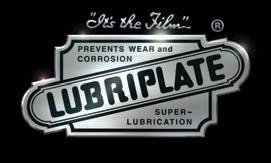
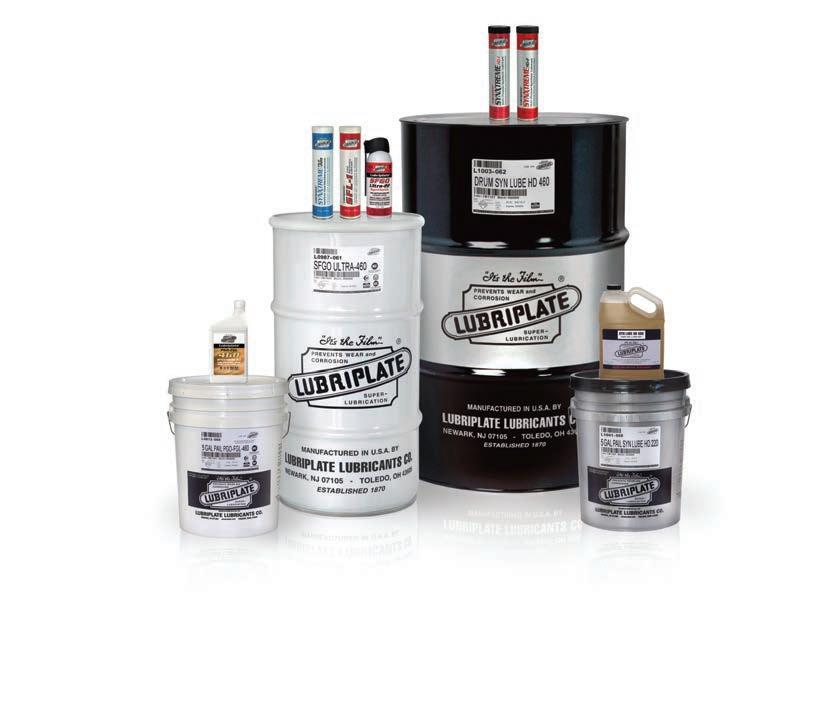
HIGH-PERFORMANCE SYNTHETIC GEAR OILS
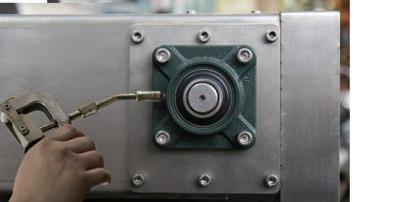
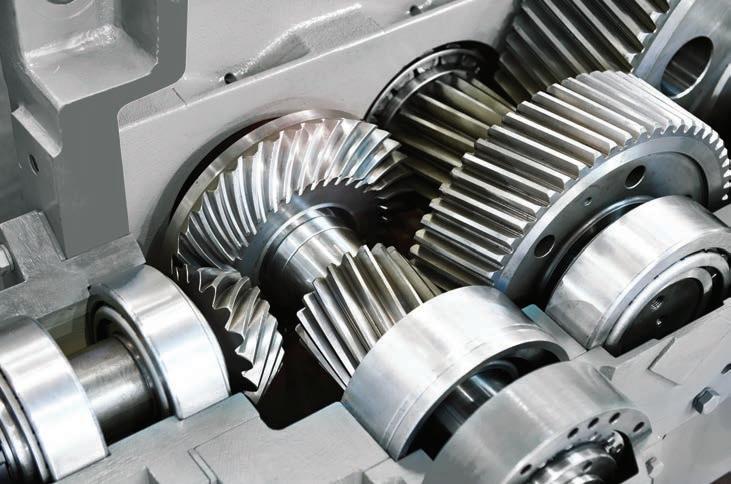
SYNTHETIC AIR COMPRESSOR FLUIDS
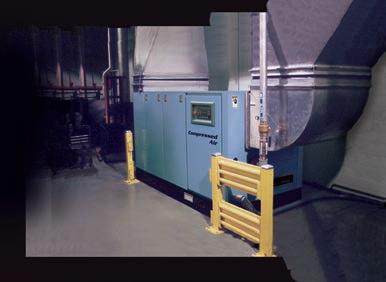
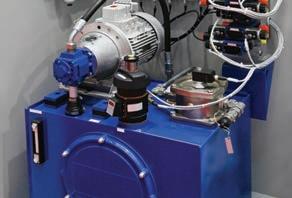
SYNTHETIC HYDRAULIC FLUIDS

HIGH-PERFORMANCE SYNTHETIC GREASES
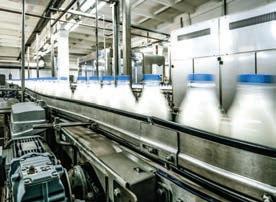
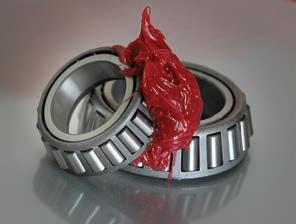
NSF H1 REGISTERED FOOD GRADE LUBRICANTS
ECO-FRIENDLY SYNTHETIC LUBRICANTS
SYNTHETIC SPECIALTY LUBRICANTS
Scan QR Code for More Information About Lubriplate’s Products and Services.

Photo: Credit tk here 28 MRO / Spring 2023 MROMAGAZINE.COM
FOR ALL OF THE LUBRICANTS YOU NEED Newark, NJ 07105 USA / Toledo, OH 43605 USA Tel: + 973-465-5700 www.lubriplate.com / LubeXpert@lubriplate.com Alberta, Saskatchewan & Manitoba: Summit Agencies Ltd. / Edmonton, AB Office / 780-406-7462 / www.summitagencies.ca British Columbia: Summit Agencies Ltd. / Langley, BC Office / 604-209-0987 / www. summitagencies.ca Ontario & Quebec: Mechanical Sales Co. / 800-263-7226 / www.mesaco.com Maritimes: Chris Kniestedt / 603-484-5262 / ckniestedt@lubriplate.com - REPRESENTATIVES IN CANADA -
ONE SOURCE














































































































